The post 日常生活中的那些體驗設計 first appeared on Koma-品牌數字化體驗設計機構.
]]>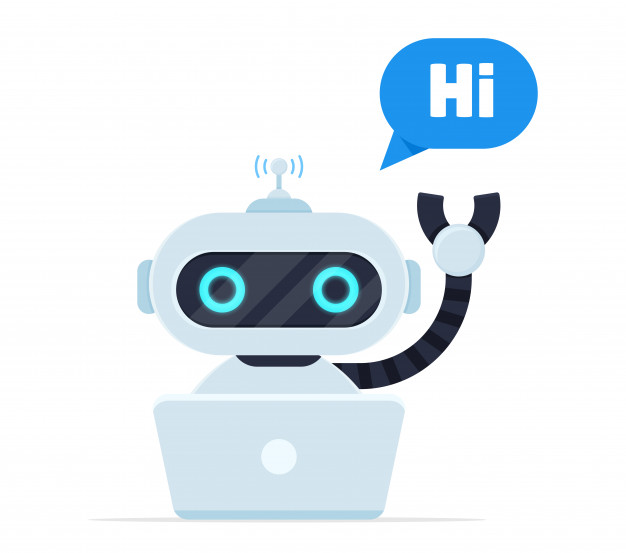
從命令地址到位智,再到要求Siri等私人助理為您完成任務,越來越多的產品和服務正在遷移到云中,并受到語音的控制。Hila Yonatan正在從用戶體驗的角度討論這一新趨勢,它對我們將要使用的下一個產品/功能有何看法?
From dictating addresses to Waze to asking personal assistants such as Siri to do tasks for you, more and more products and services are migrating to the cloud, and being controlled by voice. Hila Yonatan is discussing this new trend from a UX perspective, and what does it say about the next product/feature we’re going to work with?
當Apple首次推出Siri時,他們可能已經計劃改變世界-但他們可能沒有預料到我們對技術設備的看法會有所改變。的確,圍繞Siri的大量宣傳是蘋果旗艦產品(如果您可以將Siri稱為“產品”)這一事實的直接衍生,但是即使是苛刻的批評家也很難忽略新Siri的重要性。閃亮的私人助理,喬布斯將所有籌碼都放在上面。有無數人上傳了他們與Siri互動的視頻。BuzzFeed列出了“最有趣的20個Siri反應”列表,甚至該主題的戲劇化版本在電影“她”中也得到了永久體現,由斯嘉麗·約翰遜(Scarlett Johansson)飾演Siri-not-Siri。

When Apple first launched Siri, they probably have planned on changing the world – but they might not have anticipated the extent of the shift in our perspective towards technological devices. It’s true, much of the hype surrounding Siri is a direct derivative of the fact that it’s an Apple flagship product (if you can call Siri “a product”), but even a harsh critic would have a tough time overlooking the importance of the new & shiny personal assistant, on which Jobs had all his chips on. Countless people had uploaded videos of them interacting with Siri. BuzzFeed lists of the “20 of the funniest Siri reactions” were published, and even a dramatized version of the topic was immortalized in the movie “Her”, starring Scarlett Johansson as Siri-not-Siri.
從那里,語音用戶界面被推到舞臺中央。這項技術使我們能夠與家用電器對話,改變了我們眼前的世界呢?它將如何影響我們將來使用的產品?從專業的角度來看:它對即將發布的界面有什么看法,設計界面的人員將在多大程度上調整他們的思維方式?
From there, voice user interfaces were pushed to the center of the stage. What is it about this technology, which allows us to talk to our home appliances, that changes the world in front of our eyes? How does it affect the products we’ll use in the future? From a professional standpoint: what does it say about the upcoming interfaces, and to what extent the people who design them will have to adjust their way of thinking?
![]()

我們實際上如何使用這個東西?
How do we actually use this thing?
我們對自動化了解的越多,我們周圍的設備就越智能-我們在各種產品中看到了更大范圍的語音用戶界面。當我第一次了解該功能以指示Waze或Google Maps上的“我要去”的位置,或在不鍵入鍵的情況下設置提醒時,我以為我們會在應用程序中看到越來越多的此類活動。
The more we learn about automation, and the devices around us get smarter – we see a larger array of voice user interfaces in various products. When I first learned about the feature to dictate where “I’m going to” on Waze or Google Maps, or set a reminder without typing keys, I assumed we’d see an increasing number of such activities in apps.

如果幾年前我們談論物聯網(“物聯網”,一個聲稱每個設備都是基于網絡的實體的概念),那么今天我們看到它不再是科幻想法,而是事實。這種趨勢已經在兩架飛機相互幫助的情況下逐漸消失。
If we talked about IoT (the “Internet of Things”, a concept that claims that every device is a network-based entity) a few years back, nowadays we see that it’s no longer a sci-fi idea, but a factual reality. This trend had come to pass with the help of two planes that had grown one towards the other.
第一個 -事實是“一個萬能的應用程序”。大多數電器都以一種方式來控制。它從通過打印機和智能電視機連接互聯網的燈泡開始,直到通過單擊專用應用程序中的大型透明按鈕鎖定前門的能力。
The first – the fact that there’s “an app for everything”. Most electric appliances, in one way or another, are being controlled with an app. It’s starting with internet-connected light bulbs, via printers and smart TV sets, up until the ability to lock your front door by clicking a large, clear button in a dedicated app.
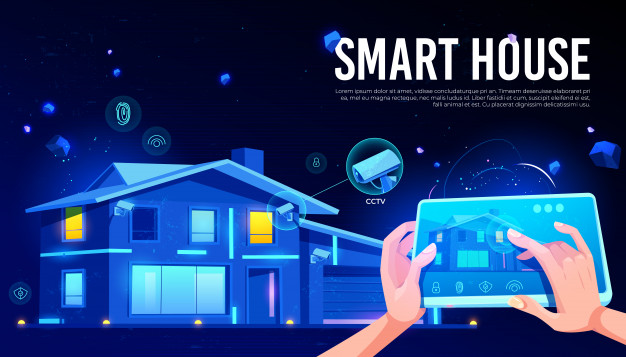
第二個 -智能助手。幾年前,這是科幻小說,但今天我們可以看到每個人都對此感興趣。它從Siri開始,進入具有Alexa的Amazon Echo設備,谷歌也與助手一起加入了潮流(我想知道為什么他們決定不給自己的角色起一個人的名字),甚至微軟也從Corani那里撤下了Cortana。電子游戲世界變成現實。
The second – smart assistants. A few years ago this was a science fiction scenario, but today we can see that everyone’s onboard on this. It had started with Siri, made its way to the Amazon Echo devices featuring Alexa, Google also joined the bandwagon with their Assistant (I wonder why they’ve decided not to give their persona a human name) and even Microsoft had pulled Cortana from the videogame world into reality.
所有這些都與您的帳戶相關聯,能夠提醒您重要的會議或設置計時器來煮雞蛋,但是這些應用程序具有的潛力不僅僅可以幫助用戶做事或記住事情!
All of these are connected to your accounts, are able to remind you of an important meeting or set a timer for boiling an egg, but the potential that these applications have is much more than just helping a user do or remember stuff!

最近,我們已經看到這兩個向量合并為一個乘積。因此,如果您可以聘請一位真正的私人助理,他可以從事許多活動(除了未定義的活動,例如“從地板上撿起”或“整理行李”),您會要求他們做什么?做,什么時候?
Recently, we’ve seen those two vectors merge into one product. So, if you could have hired a real personal assistants, who could do many of your activities (aside of non-defined activities, such as “pick up from the floor” or “pack a bag”), what would you ask them to do, and when?
從云端管理您的一天
Managing your day from the cloud
就日常工作而言–將手機連接至無線車載揚聲器,我可以說“嗨,谷歌,早上好!” –這句話可以確保我在家的窗簾關閉,空調關閉,照明燈亮著變暗,可以讓我了解路線上即將到來的交通情況,可以從我的日常日程中讀出較大的內容,甚至可以通過啟動“行車中的” Spotify播放列表來將所有內容排在首位。只要說四個字,我就能獲得一整套完整的動作,并帶來很大的愉悅感。
As far as daily routine goes – connecting my phone to my wireless car speaker allows me to say “Hey Google, good morning!” – a phrase that would make sure my curtains at home are shut, the air conditioner is off, the lights are dimmed, will update me on upcoming traffic in my route, read out loud items from my daily agenda – and maybe even will top it all with launching my “driving” Spotify playlist. By saying exactly 4 words, I get a complete suite of actions, with a large portion of delight.

預先基于語音或提供此類組件的產品數量正在上升。在表面刮擦時,我可以提到語音控制的飛利浦和小米燈泡,它們提供了各種情緒和情景。更引人注目的解決方案包括控制一系列設備的基于紅外的RM-Pro設備,控制熱水器和AC的產品,冰箱,自動吸塵器,眼罩,電源插座等-都是極限。
The sheer amount of products that are pre-based on voice, or offer such components, is on the rise. Scratching the surface, I can mention the Philips and Xiaomi lightbulbs that are voice controlled and offer a gallery of moods and scenarios. More notable solutions include the infrared-based RM-Pro device that controls an array of devices, products that control your water heater and AC, refrigerators, autonomic vacuums, blindfolds, power sockets and more – the sky’s the limit.
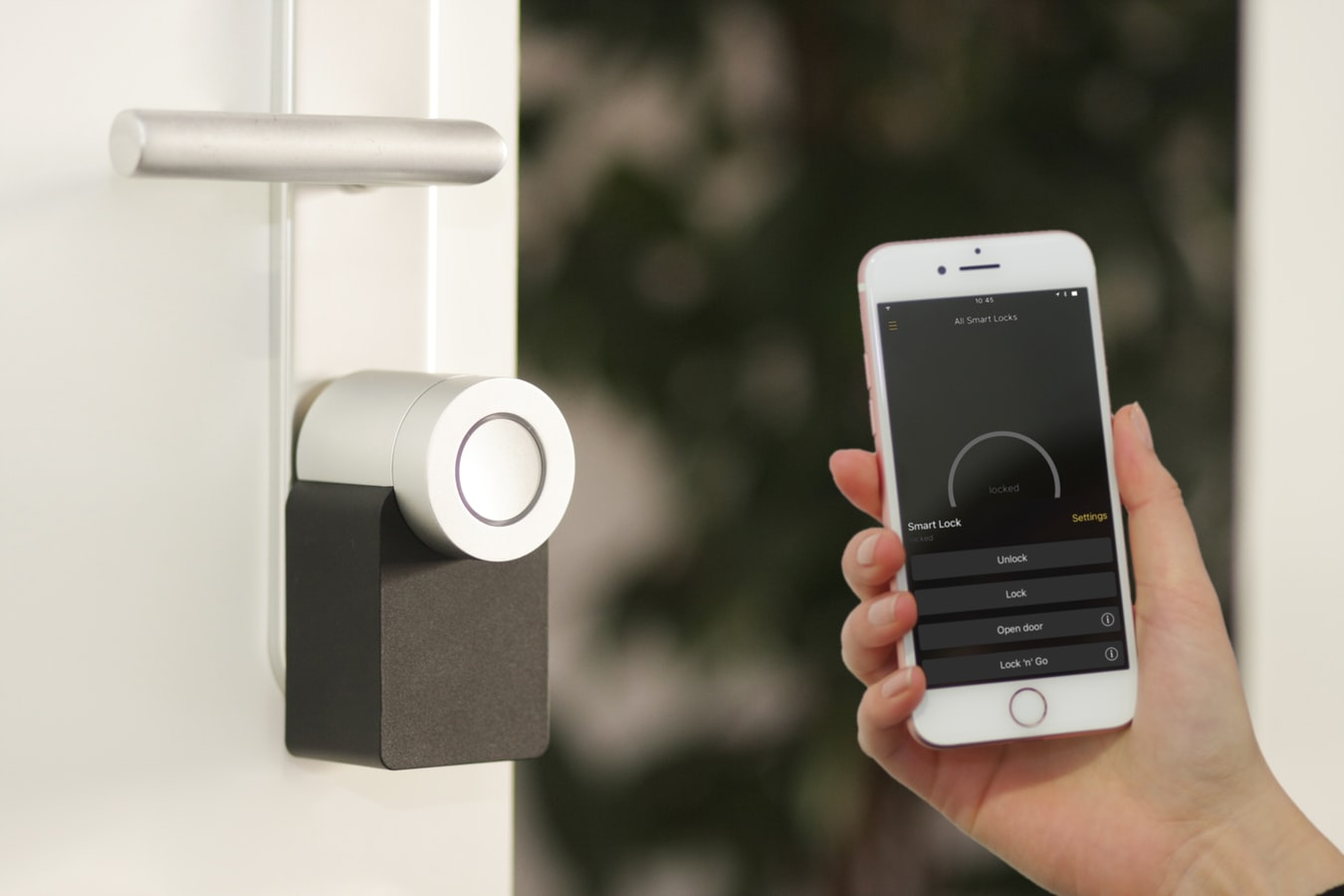
最重要的是,我們擁有控制應用程序(例如Google Home),可以通過創建儀式,同時無縫連接到助手來充當該樂隊的指揮。這意味著我們的整個房屋都可以聯機并根據要求進行控制,更重要的是–初始設置后,某些應用程序界面一旦“插入”到您的Assistant中就可以視為無關緊要。在可訪問性方面,這些功能還幫助我們歡迎需要額外關注(例如視障人士)的未開發的新觀眾。因此,除了視覺界面及其好處外,VUI(語音用戶界面)為我們所有人打開了新的交互可能性之門。
Above all these, we have control apps such as Google Home that act as conductors to this orchestra – by creating rituals, while being seamlessly connected to the Assistant. It means that our entire house can be online and controlled on request, and more importantly – after an initial setup, some of the applicative interfaces can be deemed irrelevant once “plugged” into your Assistant. In terms of accessibility, these capabilities also help us welcome new and untapped audiences that require the extra attention (such as the visually-impaired). So – alongside visual interfaces and their benefits, VUI (voice-user-interfaces) open the door to new interaction possibilities to us all.
如果這還不夠,請花點時間看一下這個概念證明,最近它已成為現實:
If that’s not enough, invest a moment of your day and watch this proof of concept, which recently became a reality:

屏幕后和用戶體驗時代
The post-screen and user experience era
基于語音和語音的界面是各種感覺所構想的純人機交互的示例。沒有可視界面,屏幕接近零。進行了一個(很短的)入職過程,顯然需要正確計劃。我們希望普通用戶能夠操作該產品,并使用一個簡單的應用程序將其連接到網絡-從這一點開始,無需進一步考慮就可以與它進行交談。
Voice and speech-based interfaces are examples of pure man-machine interaction, as conceived by various senses. There isn’t a visual interface, with near-zero screens. A (hopefully short) on-boarding process takes place, with an obvious need to plan it right. We expect the average user to be able to operate the product, to connect it to the web using a simple app – and from this point on start talking to it with no further thought.
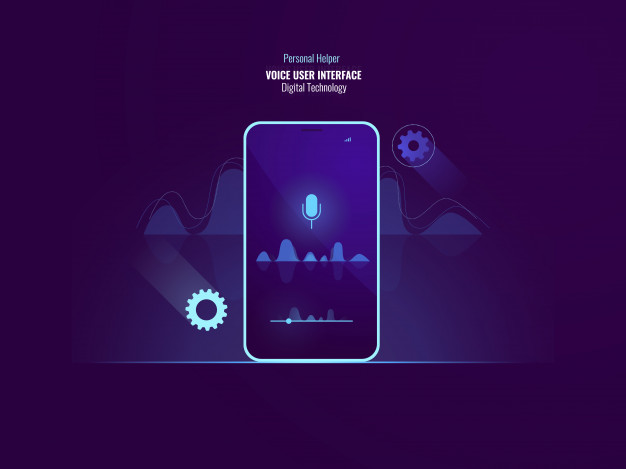
作為用戶體驗設計師,我的目標是目標受眾的直覺。我確信我們大多數人已經投入了時間和精力來計劃,研究和實施從用戶的行為中學到的外賣方法,所有這些目的都是為了能夠以最方便和透明的方式完成中央行動。向前邁進:系統與用戶進行對話的能力至關重要,請考慮產生直觀參與的難易程度,此外,還要求您不要使用視覺輔助。
Being a UX planner, I aim for my target audience’s intuition. I’m sure that most of us already invest time and thought into planning, researching and implementing the takeaways learned from our users’ behavior, all with the intention to be able to accomplish the central action in the most convenient and transparent manner. Taking it a step forward: the ability of your system to have a conversation with your users is crucial, think about how difficult it is to generate intuitive engagement – and add to that the fact that you’re required not to use visual aids.

從我們作為界面和經驗設計師的角度來看,我們看到了范式的轉變。我們專注于屏幕,外觀,微交互(所有這些仍然很重要)–現在我們要繪制一個新的圖表世界,其中包括:對話樹,直接端點,語氣,數據源,對話主題,實時等等。
We see a paradigm shift, from our perspective as interface and experience designers. We had focused on screens, appearance, micro-interactions (all of these are still important) – now we have a new world to chart, that includes: conversation trees, immediate endpoints, tone of voice, data sources, conversation topics, analysis in real time and much more.
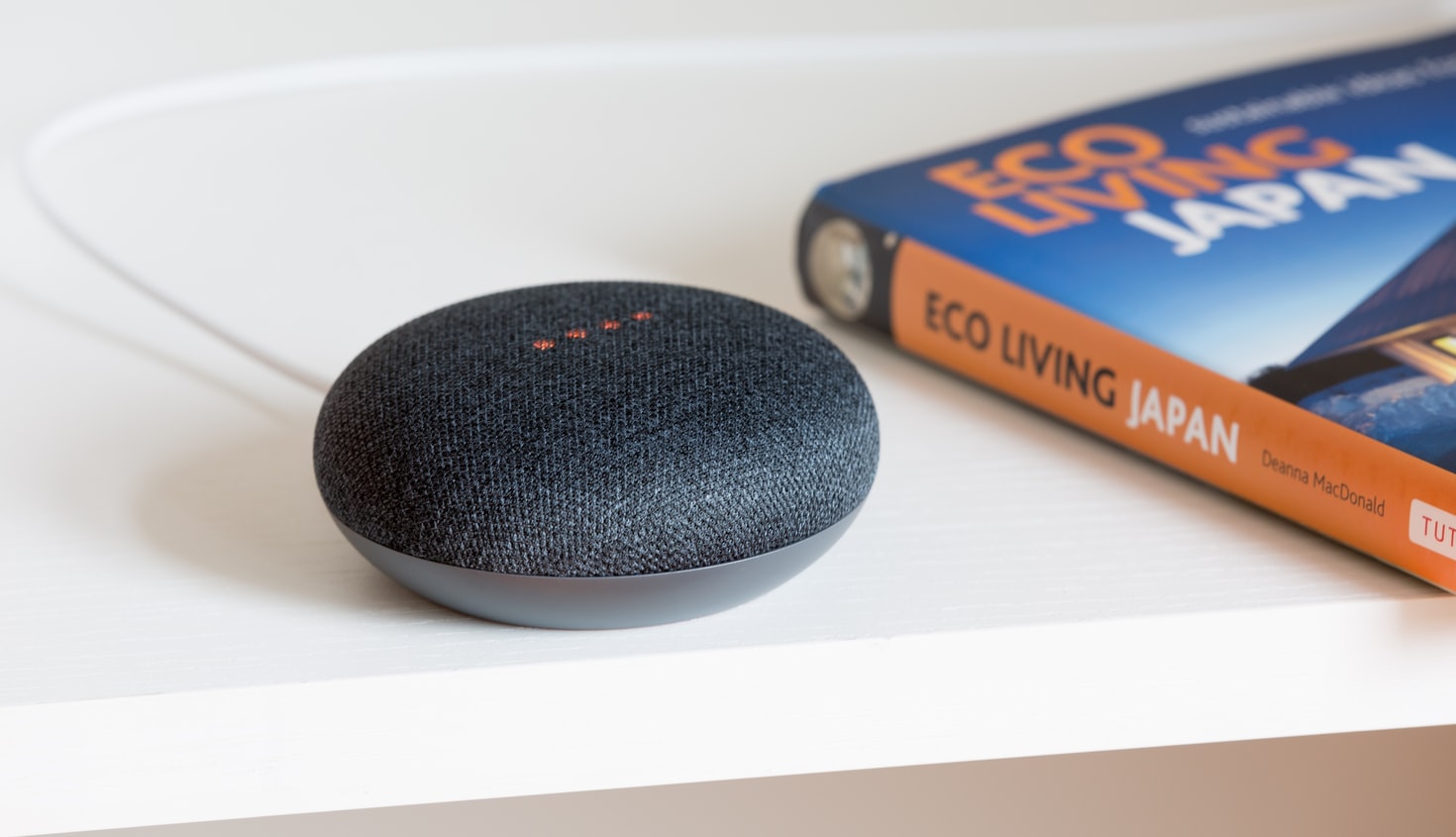
相信我,對此類事物進行定性的用戶研究需要改變觀點。我們必須考慮所有問題,從檢查最簡單的表達問題的最基本方式(以使其簡短而準確地回答問題)到創建不太機器人化或令人毛骨悚然的體驗。
Trust me, conducting a qualitative user research for such a thing requires a change of perspective. We have to consider everything from checking what’s the most basic way to phrase a question (in order for it to get a short and accurate response) and up to the creation of an experience that’s not too robotic or creepy
與平行區域的同事進行的對話確認,除了用戶體驗之外,還需要進行進一步的調整。內容必須清晰,重點突出,才能被認為是對口頭問題的正確答案。我指的是會影響Google(和其他公司)掃描和解釋文本能力的技術準備。如果正在進行市場營銷工作,那么對他們來說,至關重要的是要與我們試圖與之互動的新經驗保持一致。這些不再只是算法,而是無縫連接到物理設備的虛擬系統,同時消除了對“官方應用程序”的需求。因此,UXer在包括(或基于)語音組件的產品開發階段中的作用更加關鍵和重要。

Conversations with colleagues in parallel areas confirm that further adjustments are required, apart from user experience. The content must be clear and focused enough to be deemed a worthy answer to a spoken question. I’m referring to technical preparation that affects Google’s (and other companies’) ability to scan and interpret the text. In case there are marketing efforts taking place – it’s crucial for them to be in line with the new experience we’re trying to generate engagement with. Those are no longer just algorithms, but virtual systems that seamlessly connect to physical appliances, while negating the need for “official apps”. Therefore, the role of UXers in the development stage of products that include (or based on) voice components, is more crucial and central.
下次您說“嘿Google,給我講個笑話”或“使綠松石變成淺綠色”或“在我打ze睡之前先數一下羊”(請:)),并得到適合所有人的清淡,有益或有用的答案,而不會冒犯任何人–請記住,有一些用戶體驗專家會花時間和精力來設計整件事。
Next time you say “Hey Google, tell me a joke” or “make the light turquoise” or “count sheep before I doze off” (please :)) – and get a light, informative or useful response that suits all and offend none – remember that there are user experience professionals that invest time and thought into engineering this entire thing.
調整自己
Adjusting ourselves
當您考慮設計語音接口時,我整理了幾個主題供您參考。讓我們看看人類之間的交談方式,看看是否可以從中推斷出語音界面的聲音和感覺。
I had assembled several topics for you to refer to when you think about designing a voice interface. Let’s look at the way we humans talk with each other and see if can deduce from that how a voice interface should sound and feel.
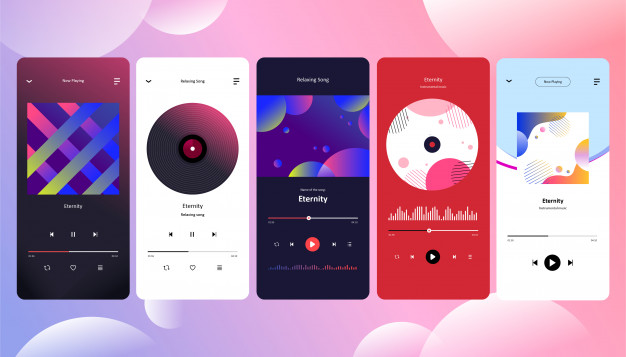
1.引起注意,直覺和持續
1. Addressing attention, intuition and continuance
當我們與另一個人交談時,我們實際上需要以上三個條件。這個過程需要我們談話的人的注意,然后是關于響應可能如何的某種直覺,然后準備根據該響應繼續對話。基于語音的系統應該受到這些方面的啟發。
When we have a conversation with another person, we actually need all three of the above. The process requires attention from the person we are speaking to, followed by some kind of intuition as to how the response might be and then be prepared to continue a conversation based on that response. A speech based system should be inspired by those aspects.
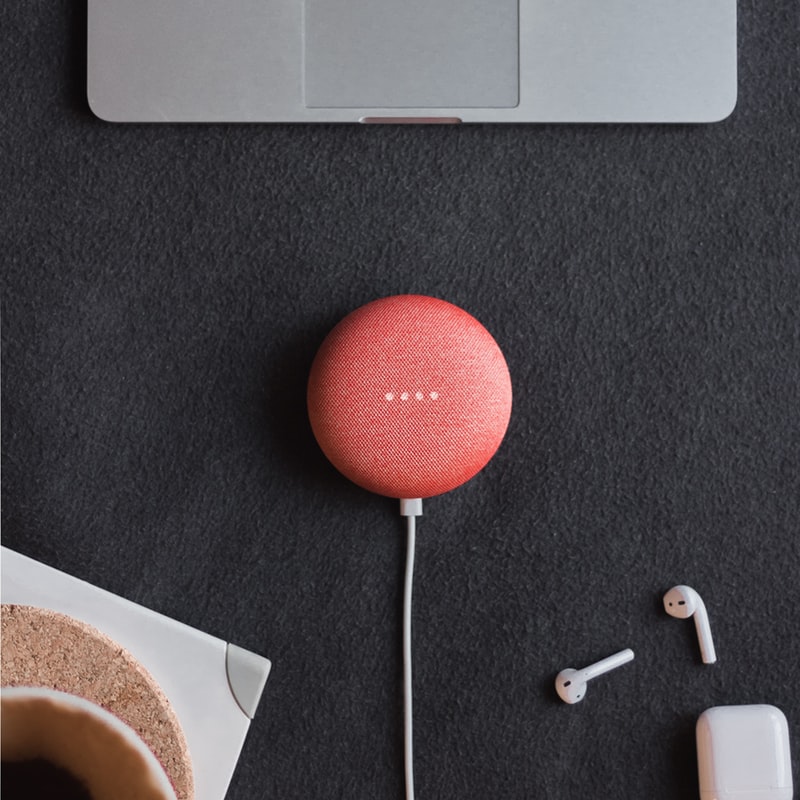
一個成功的基于語音的系統的定義很大程度上取決于用戶與之流暢交互的能力。口吃,誤解或無關緊要將加深概念上的差距,并提醒該人基本的事實–他們正在與軟件對話。為了使我們產生完美的幻覺,我們必須瞄準盡可能流暢的體驗。當我們達到一個用戶可以與產品進行完整對話的階段時(幾個句子,與單個查詢相反),我們可以假定其他所有因素都可以解決。
The definition of a successful speech-based system largely depends on the user’s ability to interact smoothly with it. Stuttering, misunderstanding or irrelevance will deepen the conceptual gap and remind the person the fundamental truth – that they’re talking to a piece of software. In order for us to create the perfect illusion, we must aim for the most fluent experience possible. When we reach a stage in which the user is being able to have a complete conversation with the product (several sentences, in contrast to a single query), we can assume that every other factor checks out.
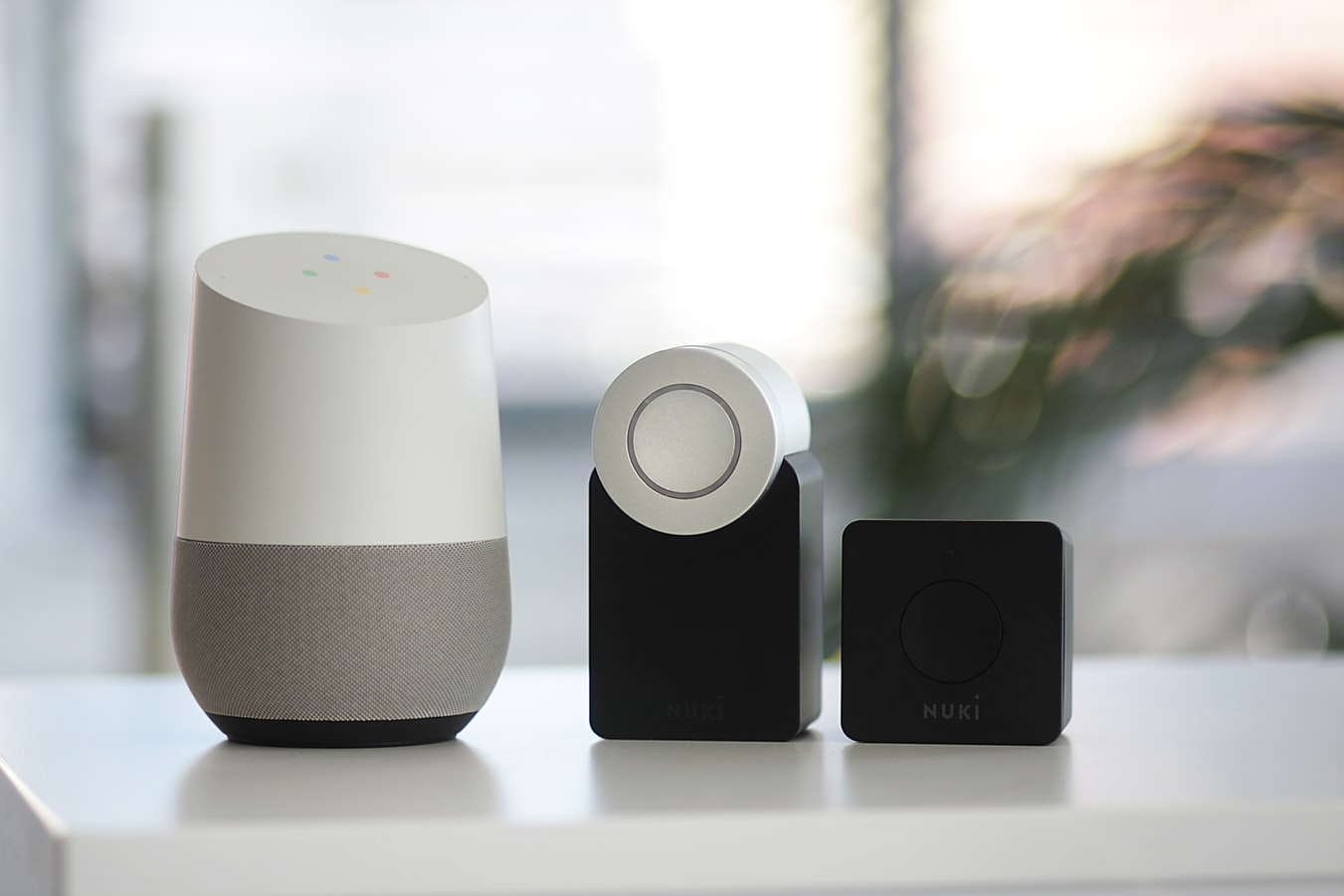
重要的是要記住,在解決人們的注意力范圍時,交互應該比平時更加??直觀,以便使我們達到與本質上是算法的語言對話的程度。如果Turing測試檢查了計算機對人類測試人員而言聲音可靠的能力–我認為語音助手已經遠遠超過了這一點,直到線路模糊為止(有時,需要發出聲音略似“機器狀”,以避免產生不和諧感)。
It’s important to remember that when addressing people’s attention span, the interaction should be even more intuitive than usual, in order for us to reach a point where we have a verbal conversation with what’s essentially an algorithm. If the Turing test examines the ability of a computer to sound reliable to a human tester – in my opinion, the voice assistants are well past this point, up until the fact that the lines are fuzzy (sometimes, there’s a need to make the voice slightly “machine-like”, to avoid a dissonance).
2.場景樹
2.Scenario trees
讓我們看一下一個相對基本的過程–與朋友自己安排早午餐,包括所有影響。我們必須在空閑時間前后進行相互調整,以確認并在日歷中做筆記(帶有特定時間(用于提醒和放置)(用于可單擊的導航))。可以很容易地看到這一系列動作如何使一個程序陷入困境,以及這個瑣碎的動作需要多少個場景樹。創建基于語音的界面的主要部分取決于創建詳細方案樹的需求。您可以通過使系統“學習”并自己生成新方案而獲得獎勵積分-這導致了流行的“機器學習”流行語。
Let’s take a look at a relatively basic process – scheduling a brunch with a friend, with all of the implications, by ourselves. We have to adjust to each other around our free time, to confirm, to make a note in the calendar (with the specific time – for a reminder, and place – for clickable navigation). It’s easy to see how this chain of actions could stump a program, and how many scenario trees this trivial action requires. A major part of creating voice-based interfaces is dictated by the need to create detailed scenario trees. You get bonus points for making your system “learn” and generate new scenarios by itself – which leads to the popular “machine learning” buzzword.
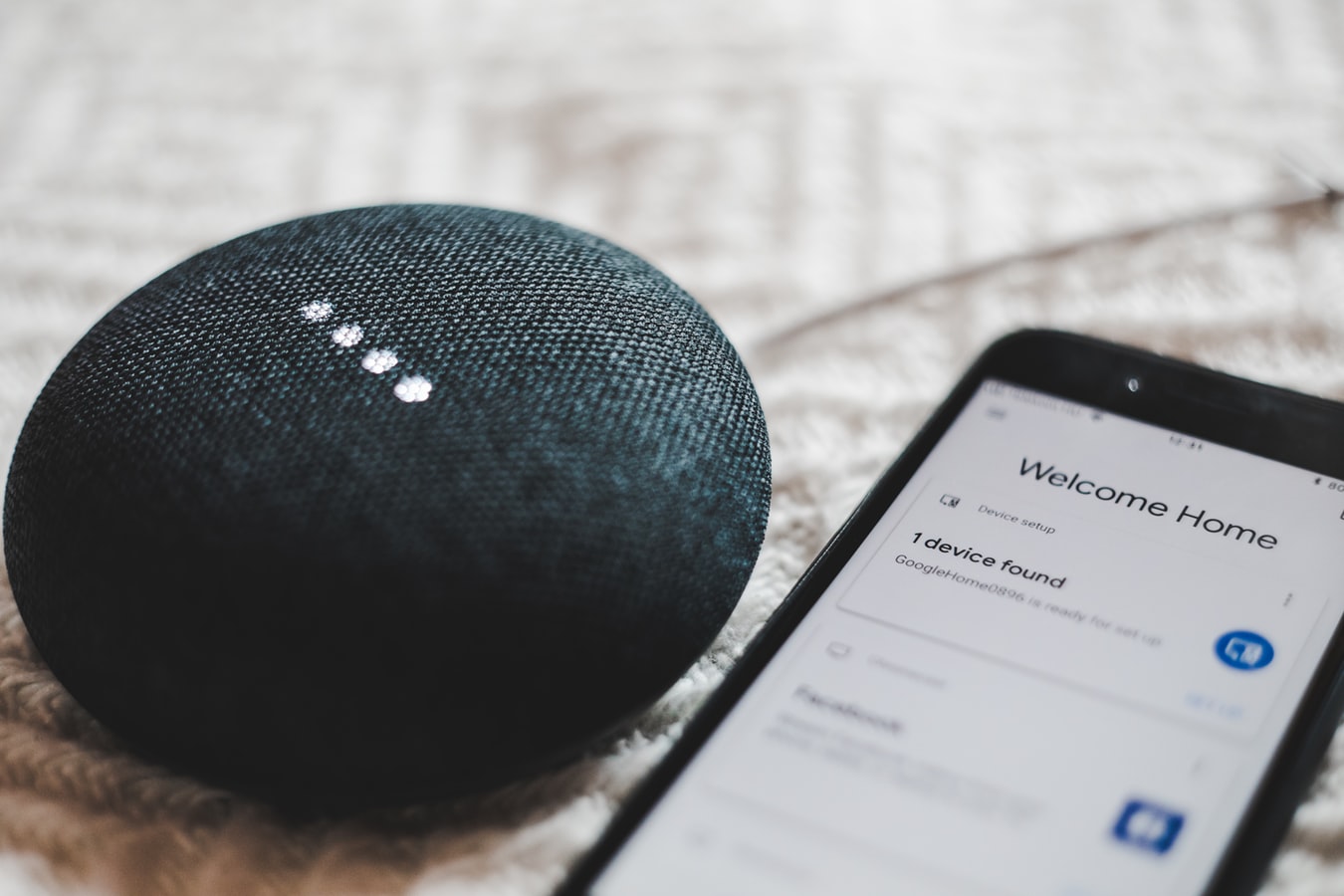
例如,當我與Google Assistant交談時,我傾向于在語音交流結束時添加“謝謝”。對我來說,作為UXer,這可能意味著經驗是成功的(并且已經得出了方案的結論)。當主要的用戶輸入是語音,并且用戶添加了對系統表示感謝的“額外”提示時–這意味著已達到目標。短信和故事文化引導我們創建簡短的內容并立即采取行動。從語言的角度來看,語音界面以完整清晰的句子甚至一點禮貌來“重新訓練”我們的會話技巧,歡迎您自己嘗試…
For example, when I speak with Google Assistant, I tend to add “thank you” at the end of our vocal exchange. For me, as a UXer, it can mean that the experience was successful (and the conclusion of the scenario had been reached). When the primary user input is voice, and a user adds the “extra” touch of thanking the system – this means that the goal was reached. The SMS and Story culture lead us to creating abbreviated content and immediate actions. In the perspective of language, voice interfaces “re-train” us in conversation skills, with complete and clear sentences, and even a bit of politeness You’re welcome to try it yourselves…
3.測量和用戶研究
3.Measurements and user research
對于那些從事語音接口(或組件)開發的人員,我建議您盡早在產品生命周期內考慮進行定量的用戶研究。在某些時候,您必須能夠衡量系統的性能-這源于設置特定的KPI。
For those of you engaged in the development of voice interfaces (or components), I’d suggest thinking about quantitative user research, as early in the product’s life as possible. At some point, you’ll have to be able to measure the system’s performance – which originates in setting specific KPIs.
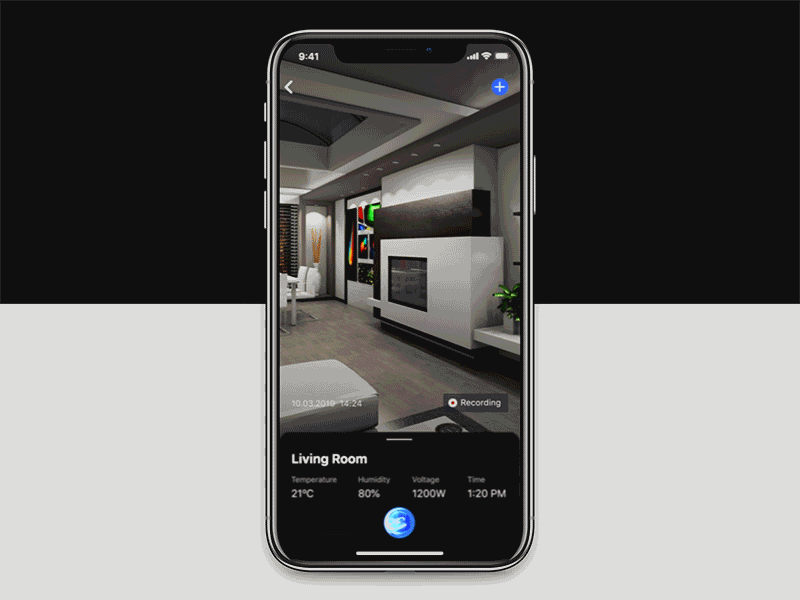
“顯而易見”的指標是成功完成的動作的數量,但就我個人而言,我認為流暢的交談也是成功的。含義:系統具有在相同上下文中進行包含多個動作的會話的能力,同時保留了收集大數據的能力,有利于改進算法。
The “obvious” metric is the number of actions that were accomplished successfully, but personally, I consider a fluent conversation also a success. Meaning: the system’s ability to have a session that includes more than one action within the same context, while retaining the ability to collect big-data, in favor of improving the algorithm.
在基于語音的系統研究領域,有兩種通用方法:定性用戶研究和定量數據。
In the field of voice-based system research, there are two general approaches: qualitative user research, and quantitative data.

讓我們首先談談言語方面。定性的用戶研究非常簡單。最好的情況是與用戶自己交談,聽普通的對話結構。最好的情況很少是對話的文字記錄。此處的目的是確定過程何時成功完成,以及交換是否為正。
Let’s address the verbal aspect first. Qualitative user research is pretty much straightforward. Best case is speaking with the users themselves, listening to an average conversation structure. Slightly-less best case is a textual transcript of conversations. The purpose here is to identify when the process was completed successfully, and whether the exchange was positive or not.
定量研究不是那么簡單。一般而言,在這種情況下,UX研究需要專有工具的初期開發,或者至少是大量定制現有工具。我們必須教一個系統“成功”和“失敗”是什么,以識別過程中的痛點,甚至放棄。在沒有數據的情況下,可能會出現該過程根本無法成功的狀態,但就系統而言,確實是這樣。系統可以根據您要求的巧克力曲奇配方找到您要的歌曲(對此結果有幾種解釋)。

Quantitative research is not that simple. Generally speaking, UX research in this context requires the initial development of proprietary tools, or at least heavily customizing existing tools. We have to teach a system what “success” and “failure” are, to identify pain points within the process, and even abandonment. In the absence of data, there could be a state in which the process wasn’t successful at all, but as far as the system sees it – it was. The system was able to find the song you asked for, in response to asking for a chocolate chip cookies recipe (there are several explanations for this outcome).

簡而言之,期望遍歷許多流程圖
In short, expect to go over many, many flowcharts
“即將推出”部分
The “coming soon” part
如果能夠體現出市場領導者的遠見,我們將能夠選擇是否在不借助屏幕的情況下,通過云很快地進行自己的操作-連接了所有內容:日程安排,電器,智能汽車和符合我們所有需求的例程。用戶體驗架構師將這留在哪里?我們必須開始考慮是否應該在某個位置集成語音用戶界面(或組件),并在該位置進行集成。當您能夠在正確的時機提供正確的解決方案時–您將掌握殺手級功能。
If the vision of the market leaders will be manifested, we’ll be able to choose whether to conduct ourselves without screens, via cloud, very soon – with everything connected: schedules, electric appliances, smart cars and routines that tend to our every need. Where does this leave us, user experience architects? We must start to think if and where we should integrate a voice user interface (or component), assuming it serves the purpose. When you are able to offer the right solution at the right moment – you have a killer feature in your grasp.
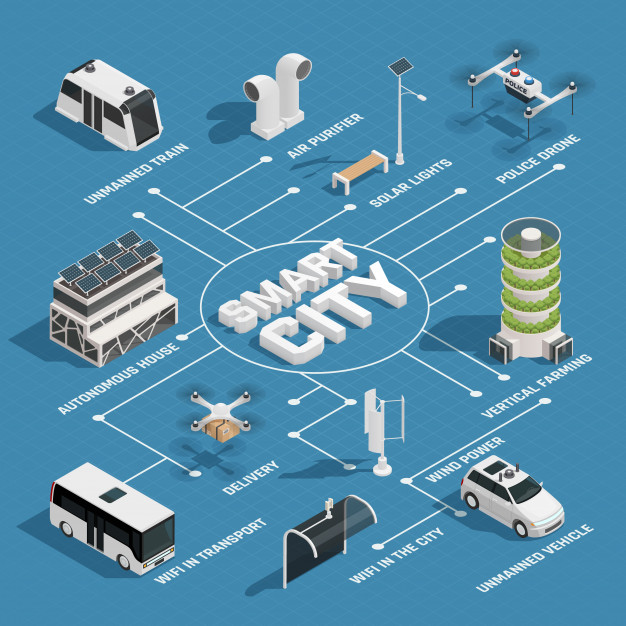
亞馬遜的Alexa通過不斷增強自身兼容性,改進AI并為外部“技能”留出足夠的空間來增強Alexa的知識和能力,從而不斷擴展其生態系統。每個技能都是用戶體驗的縮影,包裹在相同而熟悉的聲音中。
Amazon’s Alexa is constantly expanding its ecosystem, by making itself more compatible, by improving the AI and leaving enough space for external “skills” to enhance Alexa’s knowledge and abilities. Each skill is a microcosmos of user experiences, wrapped in the same, familiar voice.

如果上述所有操作都能完美執行,并且不需要上例中所述的“緊要”時刻進行修復,那么我們將擁有出色的使用經驗,可以跨平臺,在后臺運行并進行量化和測量。最重要的是:如果所有這些都歸結為滿意的用戶,他們獲得了他們想要的東西,并且我們能夠使他們免于更多的操作和更多的屏幕來查看–我們就是黃金。那就是我們所有人的目的,不是嗎?
If all of the aforementioned is executed flawlessly and doesn’t require attendance and fixes in “crucial” moments like in the example above – we have an excellent usage experience, that crosses platforms, runs in the background and is subjected to quantification and measurement. On top of it all: if all of this sums up to happy users that got what they wanted, and we were able to spare them from more actions and more screens to look at – we’re gold. That’s what we’re all here for, isn’t it?
The post 日常生活中的那些體驗設計 first appeared on Koma-品牌數字化體驗設計機構.
]]>The post 新玩具:增強現實+用戶體驗 first appeared on Koma-品牌數字化體驗設計機構.
]]>
在當今時代,“沒有互聯網”是一個令人恐懼的詞。當前,我們正處于一個重要的數字時代。如果沒有在互聯網上進行的活動的世界;它提出了有關生存本身的問題。如今,增強現實(AR)超越了炒作,只是在等待接管主流行業。
In today’s era, “no internet” is a scary word. We are currently residing in a time where having a digital presence is of utmost importance. A world where if there is no activity being conducted on the internet; it raises questions about existence itself. Surpassing the hype, Augmented Reality (AR) is here and now and just waiting to take over the mainstream industries.
在AR上發現的令人震驚的事實之一是其龐大的用戶群。到2022年,這項技術將增長到驚人的35億;超過世界人口的1/4。這就是姐妹市場如此迅速地重塑自我的原因。
One of the shocking facts found on AR was the sheer size of its user base. The tech is set to grow to a staggering 3.5 billion by 2022; which is more than 1/4th of the world’s population. And that’s the reason why sister markets are reshaping themselves so quickly.
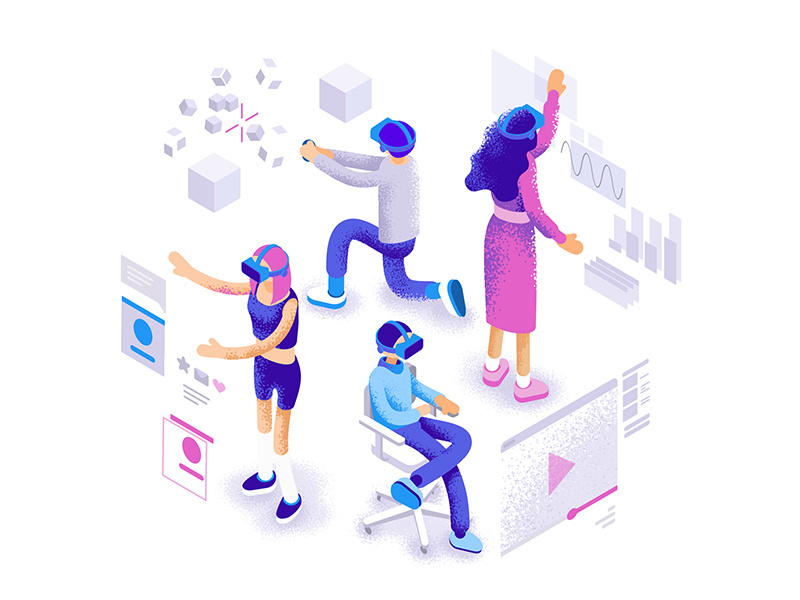
對于許多人來說,它們似乎遙不可及且充滿未來感,它已無縫融入我們的日常生活中。口袋妖怪Go是關于AR的最佳實例之一,也是最近出現的一個例子(也是使人們迷上AR的東西)。發行時,這款游戲超乎想象,甚至吸引了很多人。我的意思是說,誰會想知道一種技術,該技術能夠一次查看實際的物理世界現實元素。增強現實的概念主要以音頻/視頻的形式(作為圖形/ GPS疊加),全部與計算機生成的輸入數據有關。
Seemed far-off and futuristic to many, the tech today is seamlessly absorbed into our day to day lives. Pokemon Go is one of the best and a recent example which comes to mind when thinking about AR (and also something which got people hooked to AR) . The game was beyond imagination when it was released and even now has people hooked. I mean who would have wondered about getting acquainted with a technology that has the ability to view the actual physical world reality elements in a single go. Mainly in the form of audio/video, as graphics/GPS overlays, the concept of augmented reality is all about computer-generated input data.
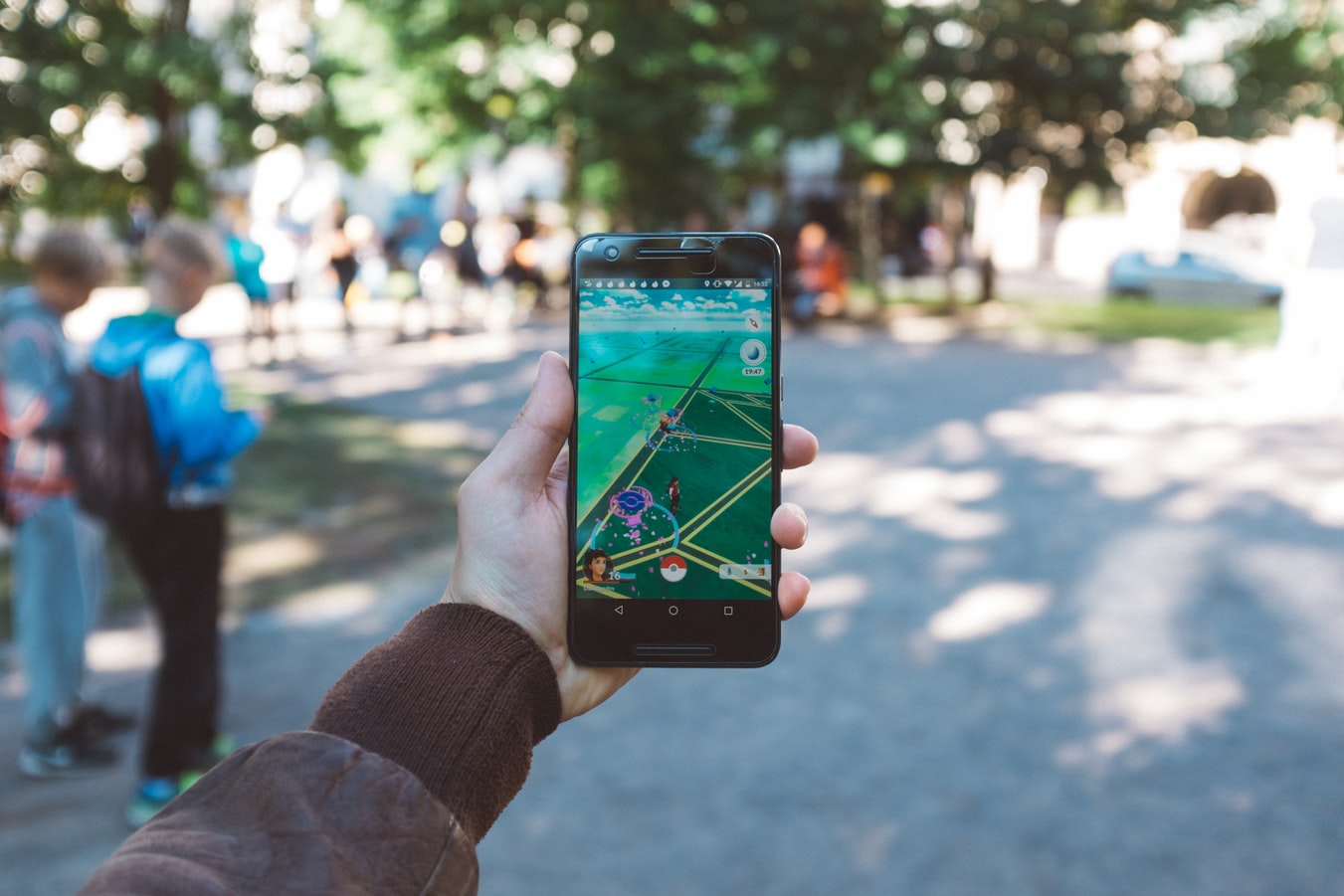
在最初階段,這項技術似乎是一項昂貴的冒險,可用于專有的高預算設備。隨著時間的流逝,企業現在有機會以經濟上可靠的速度完成其夢想概念–這全都歸功于增強現實,虛擬現實,聊天機器人和物聯網(IoT)等顛覆性技術。
During the initial stages, the tech seemed to be a costly-venture, available for exclusive high budget equipment. As time passed, businesses have now got chance to work over their dream concept in much economically reliable rates – all thanks to disruptive technologies like augmented reality, virtual reality, Chatbots, and the Internet of Things (IoT).

UX的增強現實是真正的祝福
Augmented Reality for UX is a true blessing
不管您是靠他們生活還是皇室無視,逃避現實都不是一種選擇!而壞UX和潛在的數據泄露總是傾向于在夜間,以保持業務的領導人了。但值得注意的是,這種性質的進行中的項目常常使人望而卻步。我一次又一次看到它。幸運的是,用戶體驗設計師特別歡迎AR來展示更生動的圖形。與項目無關。您可能很想知道,與UX設計結合使用時,AR具有巨大的好處。除此之外,我們已經成功地以多維的方式將所有開箱即用的方面帶入了現實世界,這是為了改進現有標準并展示更多實用元素,而這些元素在早期是無稽之談。

Either you live by them or royally ignore, escapism is not an option! And Bad UX and potential data breaches always tend to keep business leaders up at night. And yet remarkably, ongoing projects of this nature often take the back burner. I’ve seen it time and again. Fortunately, UX designers are seen welcoming AR especially to bring out possibilities of more lively graphics; irrespective of the project. It may quite interest you to know that AR has enormous benefits associated when combined with UX designs. In addition to this, we have succeeded in bringing out all the out of the box aspects in a multi-dimensional manner into the real world projected at improvising the existing standards and showcasing more practical elements that were nothing but presumptuous in the earlier era.
讓我們暫緩一下,然后從其他地方開始。網站所有者和管理者需要意識到和敏感的概念是“ UX中的增強現實”嗎?
Let’s hold off on that for a second, and start somewhere else. “Augmented Reality in UX” is the concept something that site owners and managers need to be conscious of and sensitive to?

優點Pros
創造力 – 增強現實技術在使用中可以進行相當多的創造力和擴展性思考。在創新和即興創作方面,已經存在的那些應用甚至具有一定的范圍。該技術似乎變得更加適應和復雜。
Creativity – Augmented Reality allows a considerable degree of creative and expansive thought in its use. Those applications that already exist even have some scope when it comes to innovation and improvisation. The technology seems to become more adaptable and complex at once.

參與度的提高 – 現在可以提高與最終用戶的參與度!同樣,它以一種幾乎沒有其他競爭者的方式鉤住用戶(但請參見“缺點”下的“強迫性使用”)。
Increase in engagement – An increased level of engagement with the end-user is now possible! Also, it hooks users in such a way that little else could compete with (but see Obsessive use under Drawbacks).
反饋 – 實時反饋可以刺激一千個用戶的活動,為改善他們對正在執行的任務的感知提供了很大的幫助。反饋還會引導他們穿越潛在的陷阱或盲巷。毫無疑問,這些元素還可用于在虛擬環境中重現真實活動。
Feedback – Real-time feedback, stimulation of activity to a thousand users, provides significant help in improving their perception of whatever tasks are being undertaken. Feedbacks also guide them through potential pitfalls or blind alleys. Without a shadow of a doubt, these elements can also serve to reproduce real activity in a virtual environment.
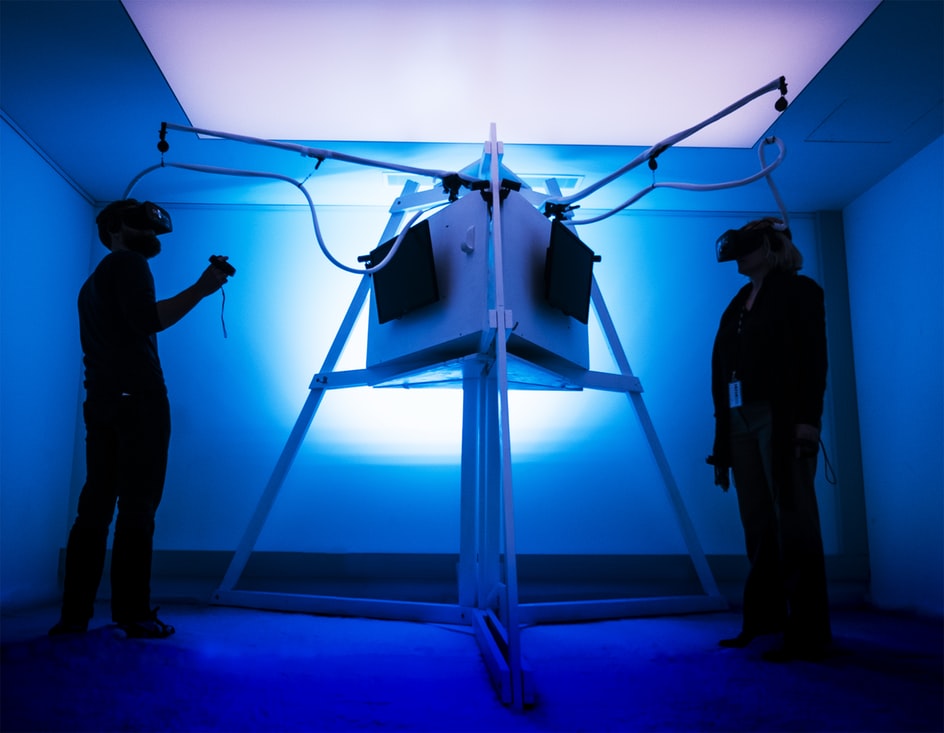
可訪問性和可移植性 – 為了正常工作,需要從多個設備和便攜式設備訪問AR 。這大大增加了其潛在的實用性。
Accessibility and portability – In order to work appropriately, AR needs to be accessible from multiple devices and portable. This increases its potential usefulness by a significant amount.
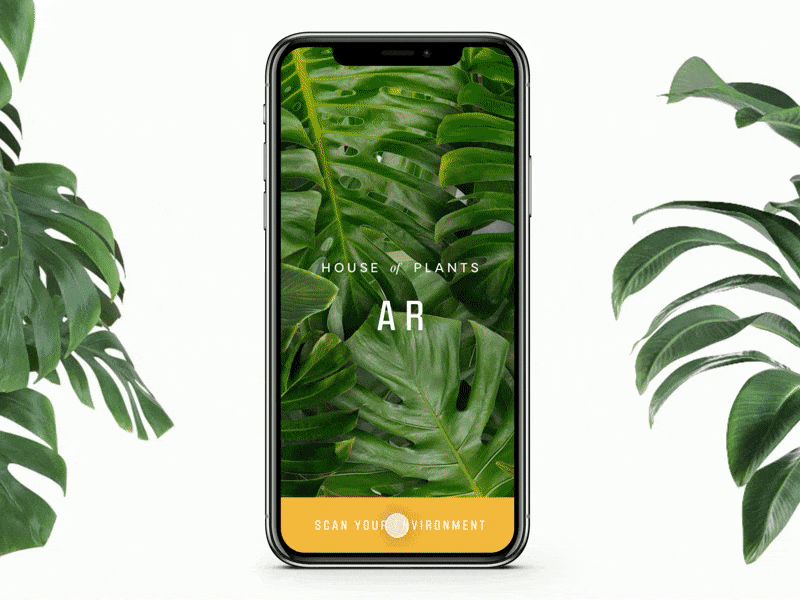
幫助理解和使用 – 您可能會很感興趣地知道,AR可以刺激用戶執行動作,從而實際上可以引導用戶進行例行或活動,而無需復雜的消息或指令,從而消除了許多錯誤,并避免了誤解或誤解方向。
Aid to Understanding and Usage – It may quite interest you to know that AR can stimulate actions it can virtually walk the user through a routine or activity without the need for complex messages or instructions thereby eliminating many errors and frustrating misinterpretation or misunderstanding of directions.

缺點Cons
安全性 – 與不同站點和應用程序共享大量共享數據時,安全性是主要問題之一。
Security – One of the major concerns is security when it comes to sharing a significant amount of sharing data with different sites and applications.

強迫使用 – 另一個可能的擔憂是強迫使用。尤其是在社會和文化領域,因為越來越多的人被視為在網站和社交媒體上花費大量時間在線,并且也許開始失去與現實聯系的感覺。
Obsessive use – Another possible concern is obsessive use; especially in regards to social and cultural fields, as more and more people are seen spending significant amounts of time online with websites and social media and, perhaps, start to lose a sense of being in touch with reality.
設計增強現實體驗時要考慮的某些要點
Certain Points to Take Into Account When Designing Augmented Reality Experiences
環境設計 – 這是人們將與您的應用程序互動的階段。無論是沿著城市的街道行走,還是沿著鄉間小路行駛,或者甚至比參加重金屬音樂會都更好,環境都是任何事物!您的設備只是充當進入AR世界的窗口。不要忘記您的最終用戶,也不要過度使用,尤其是在UI位置,顏色或大小方面。
Environmental Design – This is the phase were people will be engaging with your application. Whether it’s walking down a city street or driving down a country lane or even better like attending a heavy metal concert, the environment can be anything! Your device simply acts as a window into the AR world. Do not forget your end user and do not overdo things, especially in regards to UI placement, color, or size.
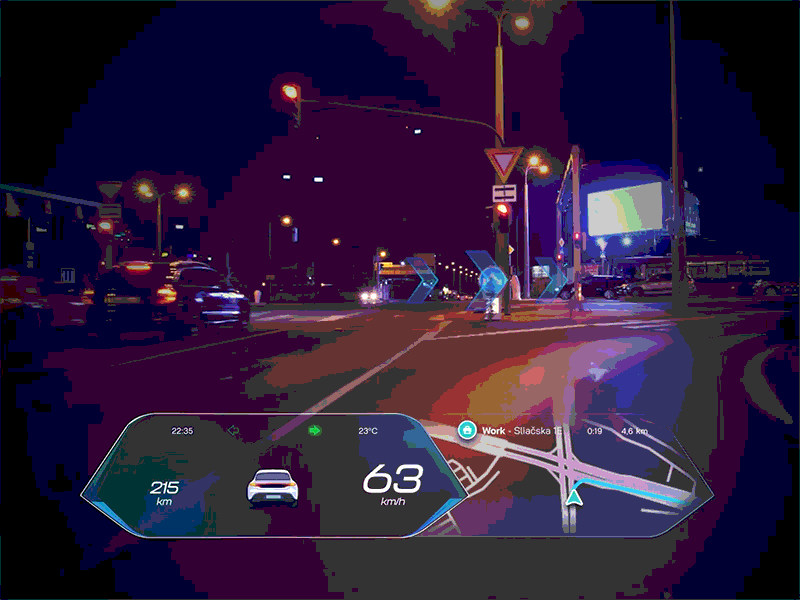
交互式設計 – 3D材質或動畫媒體是某些元素,您可以通過這些元素在電話屏幕的“窗口”中進行交互。此外,上下文還驅動用戶可以從AR設計體驗中期望的可能的交互。3D體積主要與光和陰影交互,而動畫菜單包括在AR的新上下文中渲染的圖像和視頻之類的內容。例如,Snapchat v / s Pokemon Go v / s Furniture / Car Staging –無論嘗試如何;它們都是為了鼓勵用戶達到最終目標。
Interactive design – 3D materials or animated media, are certain elements through which you can interact within ‘window’ of your phone screen. Besides, the context also drives possible interactions that a user can expect from AR design experiences. 3D volumetric mainly interacts with light and shadow, whereas the animated menu comprises of things like images and videos rendered in a new context for AR. For instance, Snapchat v/s Pokemon Go v/s Furniture/Car Staging – irrespective of the attempts; they all are meant to encourage the user to reach the end goal.
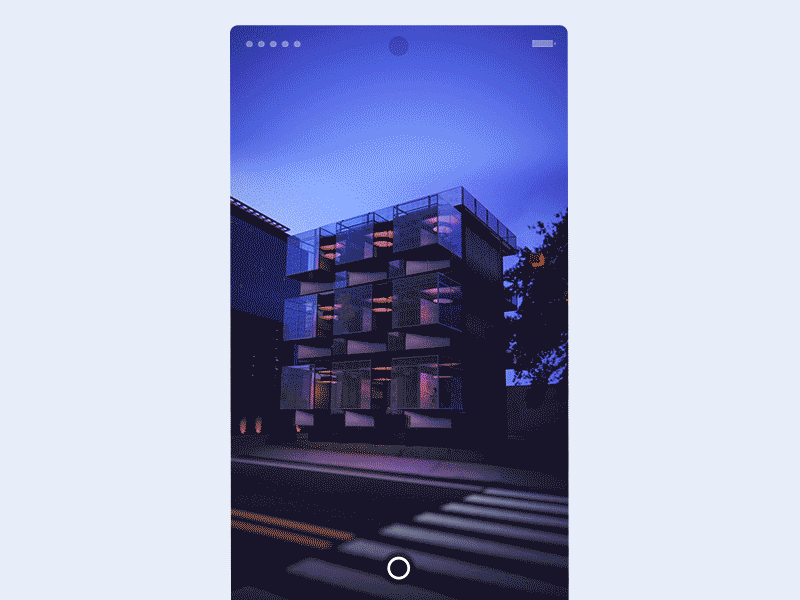
視覺和音頻提示 – 線索基本上是用來通知最終用戶設計的UI元素與之交互以及如何與之交互。嘗試使用屏幕上的UI或顯示屏幕外的元素,以鼓勵最終用戶四處查看。另外,您可以將懸停狀態添加到按鈕中并突出顯示可交互元素,以確保它們不會錯過任何偉大的事物。給用戶反饋,尤其是視頻反饋,以顯示即將發生的事情。與視覺指示器非常相似,使用音頻提示可以使用戶注意到屏幕外的物體并激勵他/她查看整個360空間。
Visual and Audio Cues – Clues are basically to inform the end user what elements of the UI are designed to be interacted with and how to interact with them. Try using on-screen UI or show off-screen elements to encourage end users to look around. Also, you can add hover states to buttons and highlighting interactable elements just to make sure that they don’t miss any great thing. Give the user feedback, especially video feedback that shows something which is about to come. Much like visual indicators, using audio cues allows a user to notice off-screen objects and incentivize him/her to view the full 360 space.

色彩和文字 – 印刷,移動,網絡和生活中其余部分的色彩理論科學,希望您知道。同樣,在AR中,嘗試使用適合背景和文化的顏色;例如,綠色表示走,紅色通常表示不或停止;藍色是“技術”和“未來”的顏色。互補的設計主要是彼此并列使用時具有很高的對比度。使人們的眼睛流血永遠是不明智的。
Color and text – The science of color theory?in print, mobile, web, and the rest of your life, hope you know it. Similarly in AR, try using contextually and culturally appropriate colors; for example, green means go, red usually means no or stop; blue is the color of “technology” and “the future.” Complementary designs have a high contrast primarily when used next to each other. It is never sensible to make people’s eyes bleed.
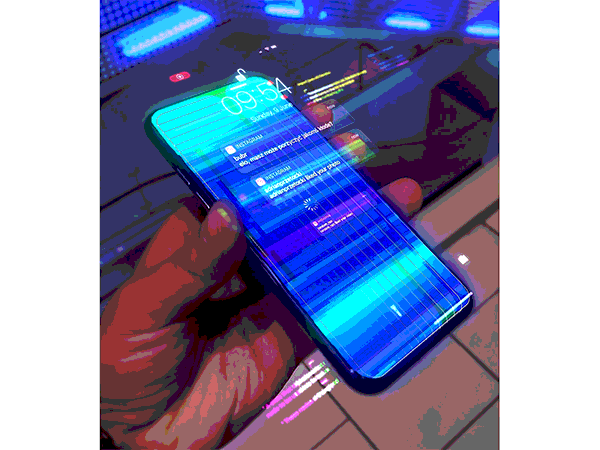
找到可行的方法 – 希望您知道進行2D體驗實驗的意義。同樣,這對于增強現實至關重要。在幾位參與者中量身定制調查,確保您簡短回答問題,并直截了當-使用較小的單詞。不要問主要問題,也不要問可以用“是”或“否”回答的問題。相反,請問他們開放性問題-什么,為什么,如何?您將獲得有關他們的個人游戲機制的更多詳細回復。
Find what works – Hopefully, you know what the significance of experimenting for 2D experiences is. Similarly, it is crucial for Augmented Reality. Tailor your survey among several participants, make sure you keep questions short and to the point- utilize smaller words. Don’t ask leading questions, and don’t ask questions that can be answered with a Yes or No. Instead, ask them open-ended questions?—?What, Why, How? You’ll get much more detailed responses about their personal gameplay mechanics.

下面,我想闡明一些已經或將會由AR經驗主導的特定行業。
Below, I would like to shed some light on specific industries that are or will be dominated by AR experiences.
1.零售業中的增強現實 – 零售業是增強現實的標志之一。人們不能否認他們已經創新和改善了購物體驗在很大程度上。購買前可以嘗試的能力大大降低了客戶流失率。您可能還想知道,人們已經開始進行計劃外的購買-這全歸功于技術的影響。以及任何人都怎么會忘記客戶正在獲得的增強的購物體驗,這一切都要歸功于AR。我們不再需要驅車1000英里去一家商店,排長隊等待,在無盡的過道中尋找所需的那一項。當人們可以使用AR在線查看他們要購買的所有產品時,這一天并不遙遠。例如,阿里巴巴擁有虛擬現實購物功能,使中國的購物者可以瀏覽和購買世界各地的商品。另一個有趣的例子是宜家廣場(IKEA Place),人們可以體驗并進行實驗,并分享良好的設計如何改變任何空間,例如房屋,
1.AR in Retail – One of the prime industries where AR is seen making its mark is the retail industry. One cannot deny the fact that they have innovated and improved shopping experiences to a great extent. With the ability to try before you buy, a severe reduction has been found in the customer churn. It may also interest you to know that people have started making unplanned purchases- all thanks to the tech’s influence. And how can anyone forget the enhanced shopping experience customers are receiving- all thanks to AR. We no longer have to drive 1000 miles to a store, wait in long tiring lines, searching among endless aisles for that one item needed. That day isn’t far away when one can view all the products that they want to buy online using AR. For example- Alibaba, it features VR shopping, allowing shoppers in China to browse and buy all over the world. Another interesting example is IKEA Place- where people can experience as well as experiment and share how good design is capable of transforming any space, such as a home, office, school or studio.

2.實用程序中的AR – 在深入研究AR實用程序的最佳示例之前,讓我熟悉AR的工作原理。必須考慮一些工具,例如Lens studio –在這里,您可以創建自己的神奇的AR體驗,并在世界上最常用的增強現實平臺(例如Snapchat)上共享它們。另一個有趣的工具是 Maya,您可以在其中創建3D模型和動畫,然后將它們添加到Lens Studio中以導出到Snapchat。如今,成千上萬的iOS(即世界上最大的AR平臺)用戶可以構建無與倫比的增強現實體驗,這一切都要歸功于ARKit。例如,簽入Airbnb,您將獲得一張包含所有便利設施和使用說明的AR地圖。
2. AR in Utility – Before we delve into best examples for AR utility, let me get you acquainted with how AR works. There are a couple of tools that must be taken into account such as Lens studio– Here you can create your own magical AR experiences and share them on the most used augmented reality platforms in the world such as Snapchat. Another interesting tool is Maya, where you can create 3D models and animations then add them to Lens Studio to be exported to Snapchat. Building unparalleled augmented reality experiences has now become possible for hundreds of millions of users on iOS?, i.e., the biggest AR platform in the world- all thanks to ARKit. For example, check into an Airbnb and you will be equipped with an AR map that incorporates all the amenities and instructions on how to use them.

3. 醫療中的AR – 通過適當的可視化,可以很容易地向患者解釋復雜的醫療狀況。除此之外,這種技術還通過為外科醫生提供改善的感覺感知來降低手術風險。解剖學是外科醫生有效使用的強大工具。
3. AR in Medical – With appropriate visualization, complex medical conditions can be explained to patients quite easily. In addition to this, such technology also reduces the risk of operation by giving the surgeons improved sensory perception. Anatomy is such a powerful tool used by surgeons effectively.
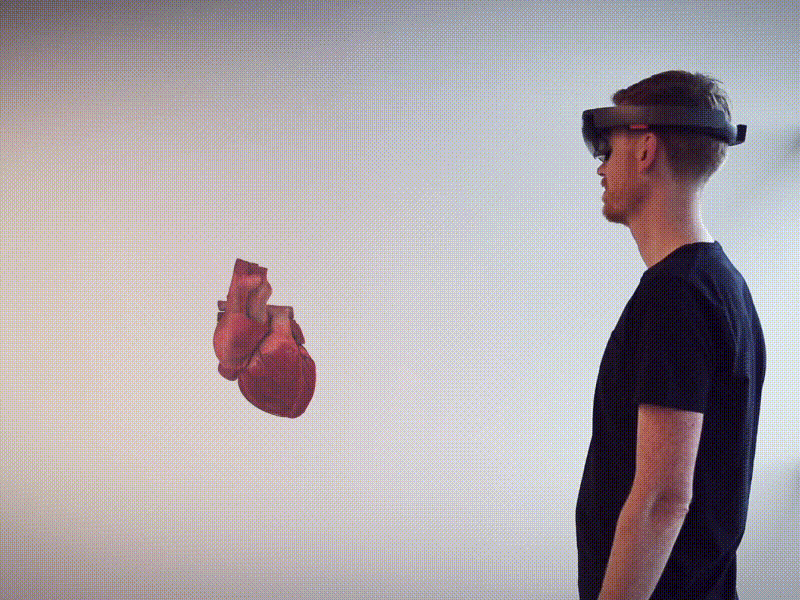
4.游戲中的增強現實 – 正如我之前所說,《口袋妖怪Go》近來一直在增長。不可否認,增強現實正在興起,特別是在游戲領域。除此之外,Ghost Snap,Zombies等在全球引起了轟動和興奮。
4. AR in Gaming – As I said before, Pokemon Go’ has been gaining momentum these days. There is no denying the fact that augmented reality is on the upswing, especially in the gaming realm. Apart from that, Ghost Snap, Zombies, etc. have created a sensation & excitement across the globe.

5.汽車領域的AR – 您可能很感興趣,因為在當今時代,有很多汽車制造商在創建物理原型之前都使用了AR技術。更重要的是,由于易于使用,自定義功能,透明度等原因,一些汽車經銷商已開始在其展廳中介紹該技術。該技術還可用于通過展示來增強駕駛體驗。AR既是一種安全功能,又是一種便利功能,使駕駛員可以將目光停留在道路上,而不是儀表盤或導航上。
5. AR in Automotive – It may quite interest you to know that there are many automakers in the present era making use of AR technology before they create a physical prototype. More importantly, several car dealers have begun introducing the tech in their showrooms due to the ease of use, customized features, transparency, etc. This technology can also be used to enhance the driving experience through displays. AR serves as a safety feature as well as a convenience, allowing drivers to keep their eyes on the road rather than instrumental panels or navigations.
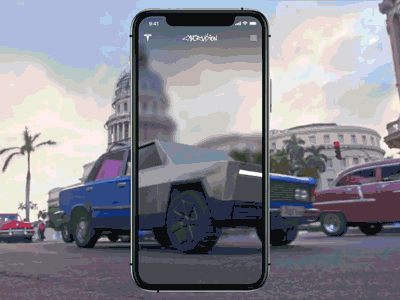
實際上,包括寶馬和現代的創世紀印記在內的公司已經開發了AR用戶手冊。當安裝在所有者的移動設備上時,這些應用程序將使用計算機視覺來識別內部機艙或引擎的組成部分,并將相關信息覆蓋在汽車的真實世界組件上,從而一勞永逸地擺脫擁有汽車之謎。
In fact, companies including?BMW and Hyundai’s Genesis imprint have developed AR owner’s manuals. When installed on the owner’s mobile device, the apps use computer vision to identify components of the interior cabin or engine, overlaying relevant information over the car’s real world components to take the mystery out of owning an automobile once and for all.
The post 新玩具:增強現實+用戶體驗 first appeared on Koma-品牌數字化體驗設計機構.
]]>The post 快速復盤KomaDesign的2019 first appeared on Koma-品牌數字化體驗設計機構.
]]>
充滿創意和愛的一年,今天我們服務了眾多企業主
終于可以把工作拋諸腦后
年初立的flag都實現了嗎
許的心愿都達成了嗎
別的我是不知道
Koma的2019倒是小有收獲
盤它就完了!
按慣例,簡單介紹下:
Koma Design是一家定位于用戶體驗、互聯網產品、品牌創新的設計公司,致力于運用最前沿的設計思維,以好設計+商業的合理結合,用我們的想象力和邏輯帶來獨特的創新,幫助品牌完成商業增長的同時,更加重視設計美學與體驗魅力,以TOP級設計解決方案賦能品牌。
目前在成都和悉尼有辦公室,服務面向海內外客戶。
團隊由國際?? 項目經理、?
項目經理、? 產品經理、???UIUX設計師、???品牌設計師、???插畫師、??
產品經理、???UIUX設計師、???品牌設計師、???插畫師、?? 前后端工程師組成..
前后端工程師組成..

Koma Design is a design company that is specialised in the digital innovation, product design and user experience. With bespoken design and interesting user experience, Koma Design empowers top brands in China and overseas with top level design solution and helps their business objectives.
互聯網金融 · 紐約16 Financial?
官網設計 / 交互設計 / 技術研發|北美


歐洲旅游服務 · Bespoke旅行?
網站設計 / APP設計 / 交互設計 / 技術研發 |杭州


消費與時尚 · Mieu眼鏡?
品牌 · 官網 · 交互設計 / 技術研發|北京| mieu-eyewear.com


建筑數字智能科技 · Persagy博銳尚格?
品牌升級 / VIS設計|北京|www.persagy.com

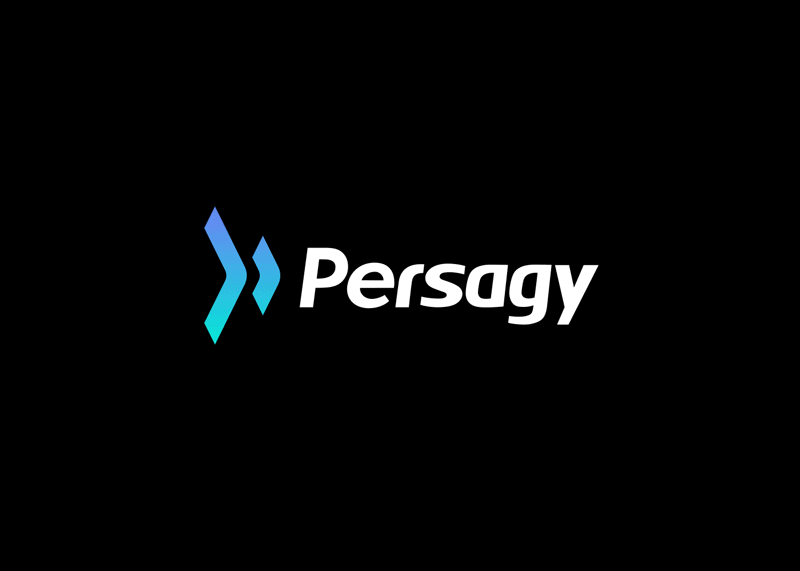
智能運動 · Yeekang跑步機?
交互設計 / 界面設計 / 技術研發|歐洲


金融風投 · Zhongcap熙金資本 ?
官網設計 / 交互設計 / 移動端設計|北京

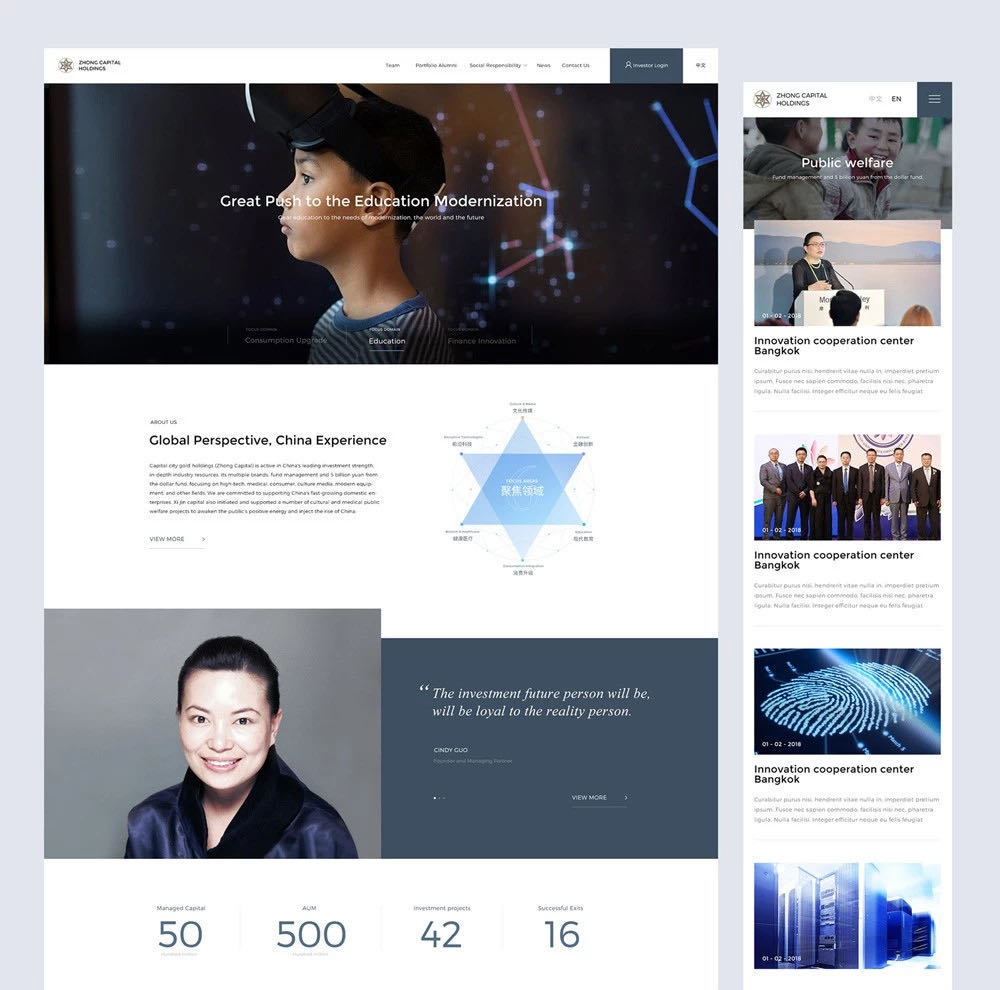
區塊鏈科技 · Onchain 分布科技 ?
官網設計 / 交互設計 / 移動端設計|上海|www.onchain.com/en
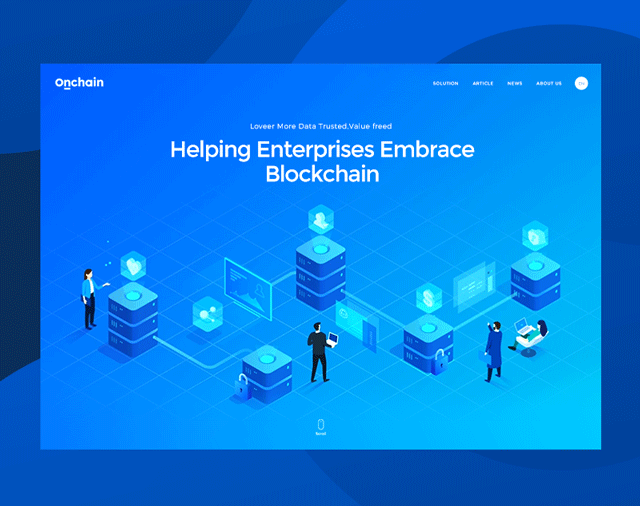

奢侈家具 · 自然主義?
官網設計 / 交互設計 / 移動端設計 / 技術研發|廣州


區塊鏈科技 · BIBO?
官網設計 / 界面設計 / 品牌設計|成都

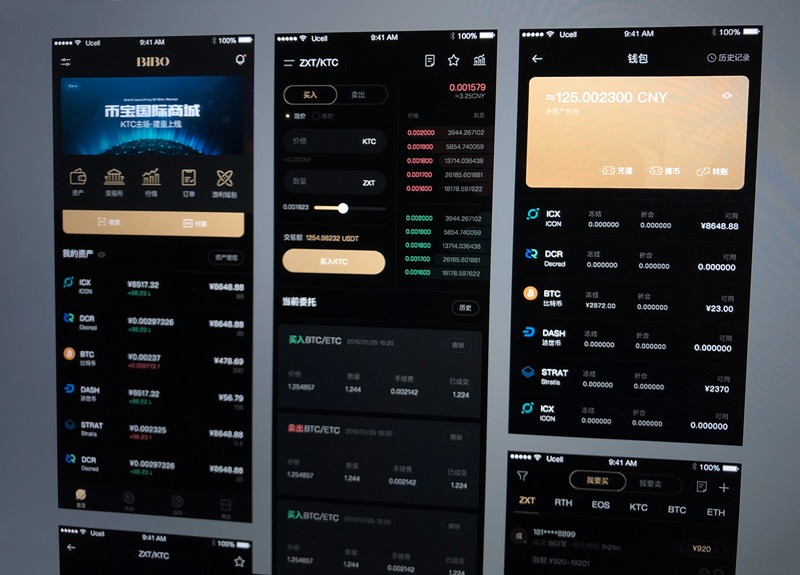
教育 · 悉尼新南威爾士大學?
官網設計 / H5設計 / 交互設計 / 移動端設計|悉尼
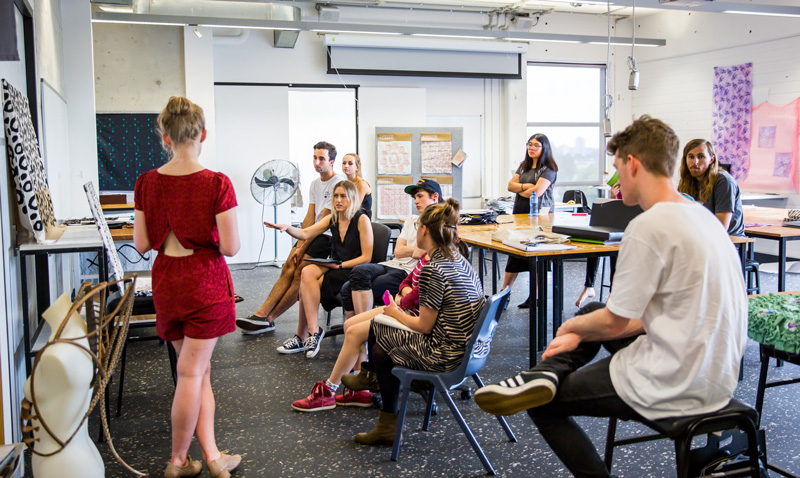
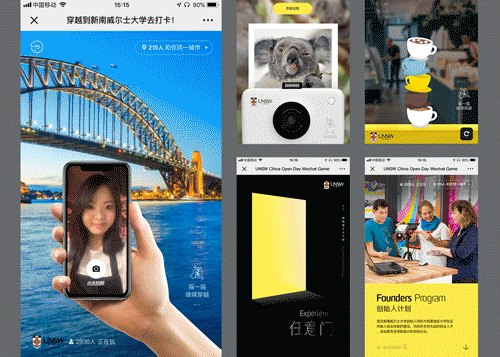
醫院醫療 · 日本英醫院?
品牌設計 / 官網設計 / 交互設計 / 移動端設計|日本


AI智能工具 · ulcan俯瞰?
產品交互設計 / 界面設計|北京

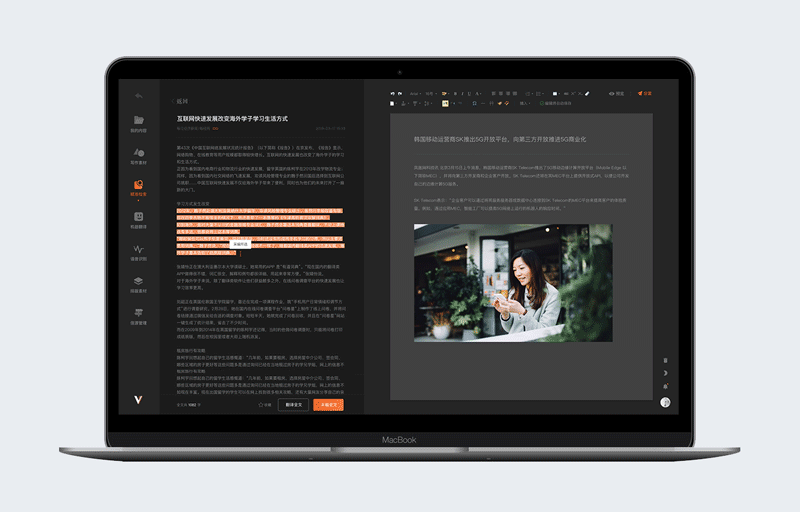
幼園服務 · hoogoo和谷?
產品交互設計 / 品牌設計 / UI設計 / 技術研發|北京

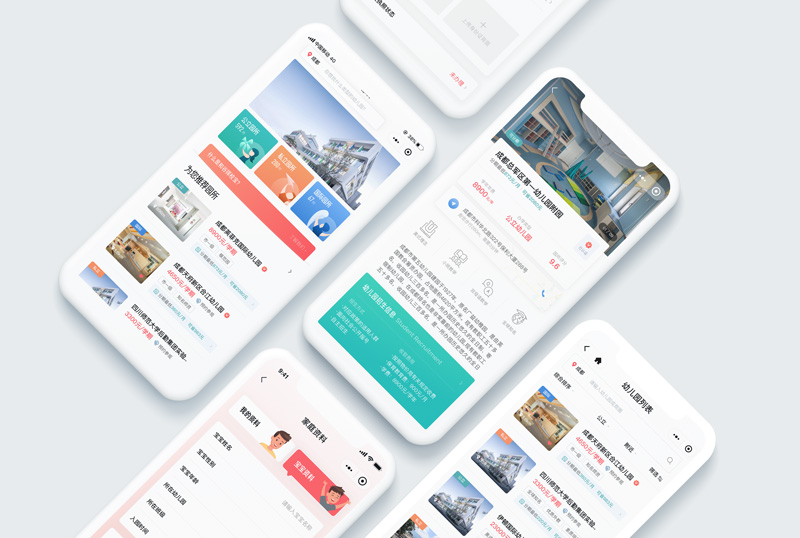
還有來自社交、出行、電商、教育、知識付費、金融
等團隊作品…

小編就先盤到這兒啦~
了解更多可以關注我們
…
聚焦用戶體驗&品牌創新設計
KomaDesign多彩的2019
以高品質要求與品牌主粑粑們?一起挖掘了各種可能性~
在線上線下參加了無數場活動與會議,高效溝通真誠服務,永遠期待最有挑戰的項目。專注設計服務思維落地,國際視野是我們的品牌性格,讓設計與交互本身為品牌助力,在完成品牌增長同時,更重視價值和美。
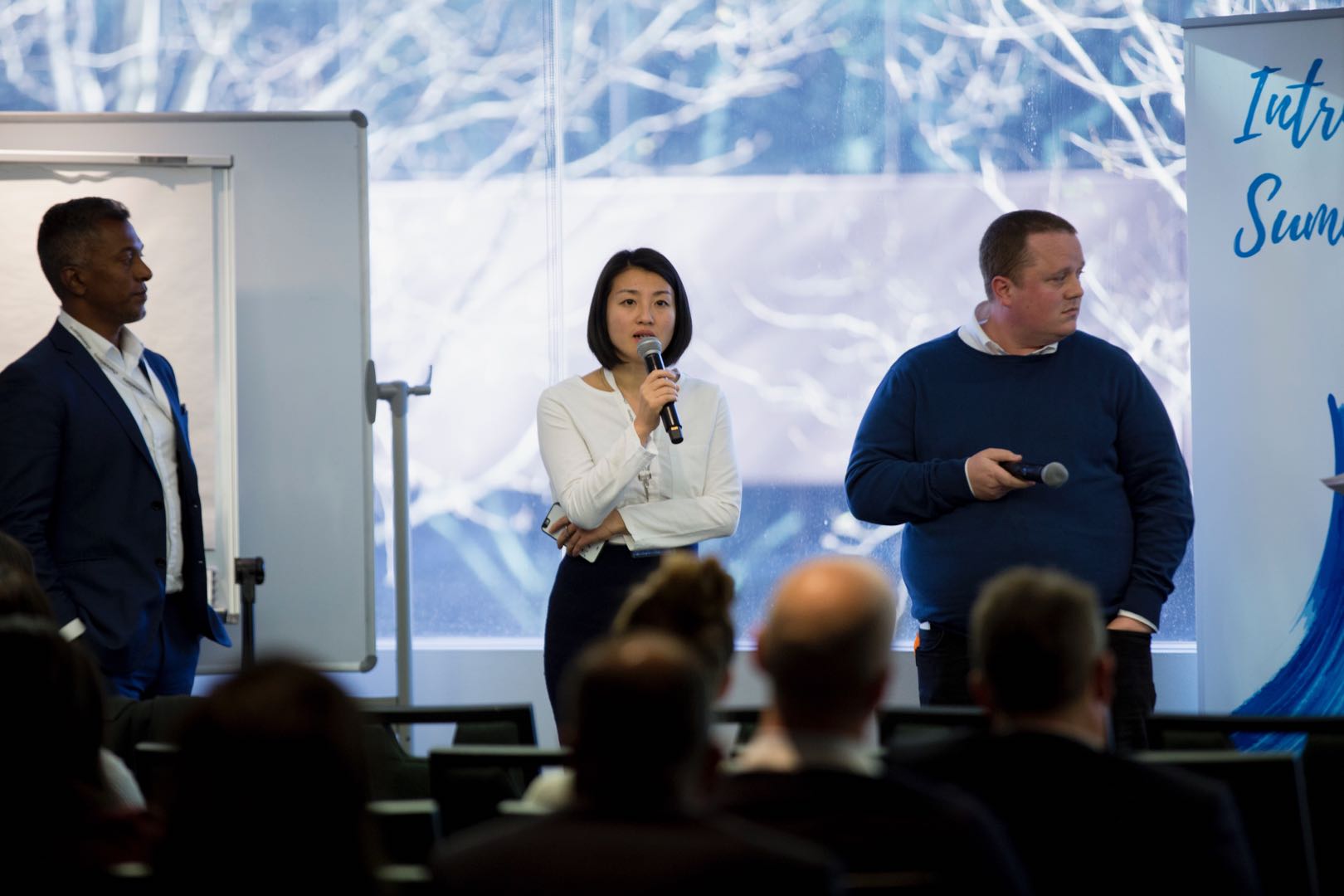
海外市場合伙人雪婷在 Access China數字營銷峰會上演講
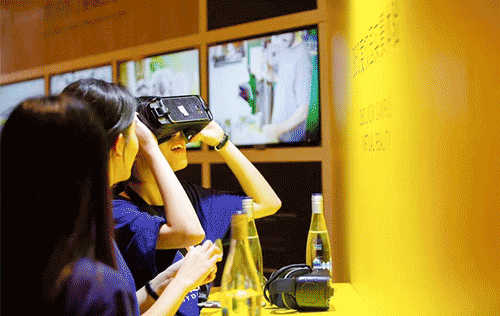
太古里線下活動 / 客戶會議
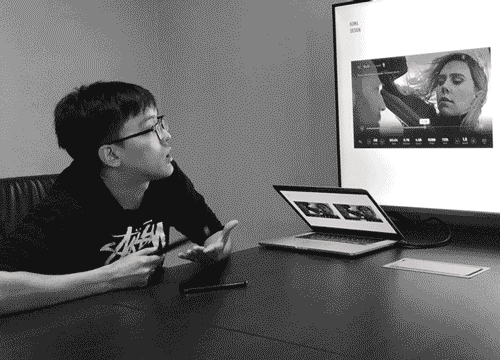
? 隊友們 的 高光時刻

2020繼續執著前行
吶,歡迎更多的?隊友加入
簡歷直投
jobs@hellokoma.com
期待遇見追求品質的品牌主們
來 · 撩 · 全 · 新 · 項 · 目 · 合 · 作
work@hellokoma.com
The post 快速復盤KomaDesign的2019 first appeared on Koma-品牌數字化體驗設計機構.
]]>The post 人工智能與網頁設計的未來 first appeared on Koma-品牌數字化體驗設計機構.
]]>
對于未來似乎正在發生的事情,人工智能(AI)是一項無可替代的技術。當今的現代垂直行業非常依賴于更快、更準確、更實惠的在線業務模式。憑借其無限的潛力,設計人員和開發人員可以在Web開發中極大地利用AI應用來簡化其日常網站管理任務,并從目標用戶那里獲得更高的價值。AI應用程序和工具不僅使網站操作直觀明了,而且使在線體驗更加豐富和個性化。
For what the future seems to unfold, Artificial Intelligence (AI) is a technology without alternative. Today’s modern industry verticals are crucially reliant on faster, accurate and more affordable modes of online business. With its unlimited potential, designers and developers can immensely leverage AI applications in web development to streamline their daily website management tasks and achieve a higher response value from their target user. AI applications and tools not only make your website operations intuitively clear but turn its online experience more rich and personalized.
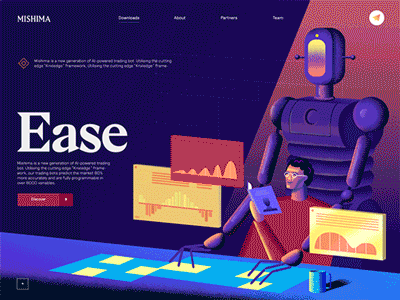
by Zark Steele-Eklund for Studio VOR
據相關專家稱,到2025年,人工智能將發展成為價值1186億美元的產業
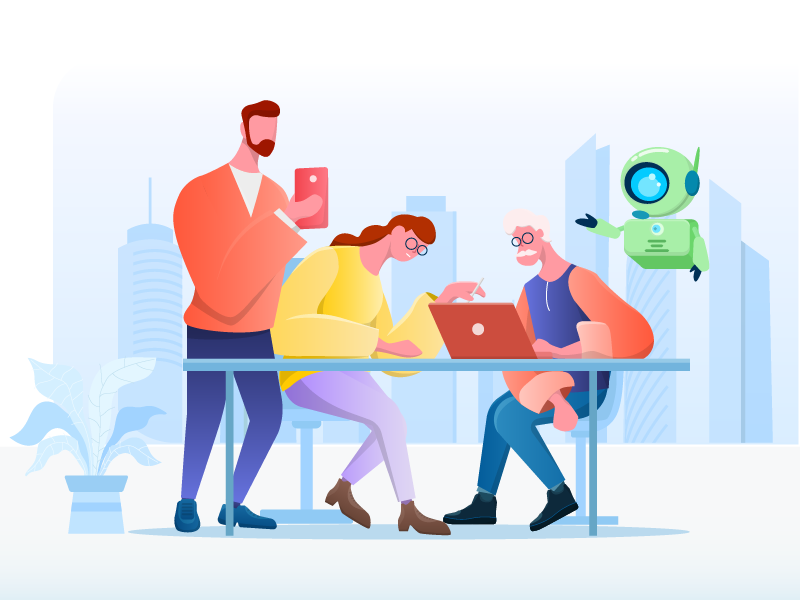
by Taufik Wicaksono illustration project
從理論上講,人工智能可以使增強網站的交互體驗,增強其搜索能力,更好地管理和組織庫存,改善與訪問者的互動,提供個性化的用戶體驗以及通過數字營銷活動,準確地定位消費者。隨著越來越多的設計師和開發人員轉向基于AI的設計實踐,人工智能現已成為現代Web開發中不可或缺的一部分。
In theory, AI can empower you to enhance your website’s appearance, strengthen its search abilities, manage and organize your inventory better, improve interaction with visitors, provide personalized user experience, and accurately target consumers through your digital marketing campaigns. With a growing number of designers and developers shifting towards AI-based design practices, artificial intelligence has now become an indispensable part of modern web development.

人工設計智能(ADI)系統的興起
The Rise of Artificial Design Intelligence (ADI) Systems
人工設計智能(ADI)系統的不斷發展影響了當今網站設計方式的重大轉變。在傳統環境中,用戶界面設計過程通常不堪重負,因為需要大量的創造力才能保持其獨特性。它可能始于您和您的設計師團隊分享他們的想法,將其記在白板上,并探索幾種可能性和結果。在開始任何A / B測試之前,必須設置線框并將其轉換為HTML,以便可以開始開發過程。眾所周知,該過程需要大量的工作,而Bug是您無法避免的事情。
The growing field of artificial design intelligence (ADI) systems has influenced a major shift in the way websites are designed today. In a traditional environment, the user interface design process is often overwhelming since you require a great deal of creativity to keep it unique. It may begin with you and your team of designers sharing their ideas, jotting them down on a whiteboard, and exploring several possibilities and outcomes. Before any A/B testing can begin, the wireframe is set out and translated into HTML so the development process can begin. The process as we all know demands a sheer amount of effort and errors are just something you cannot avoid.

by Andy Selimov for Fireart Studio
隨著技術的飛躍發展,人工智能已迅速成為在線業務的主流,使設計人員可以將其應用程序組合到網站中并創造更好的功能和用戶體驗。智能網格是的AI和網頁設計手牽手在一起的最早的范例之一。它是在AI上運行的設計軟件,可幫助Web設計師和網站所有者根據其特定項目需求,業務活動或個人喜好獲取具有現代外觀的定制網站。從那時起,還有其他一些成功進入者將AI和Web設計提升到了一個全新的水平。諸如Adobe,Firedrop,Bookmark,Squarespace,Wix,Tailor Brands這樣的AI創新者是在在線環境設計中使用AI的領先科技公司。
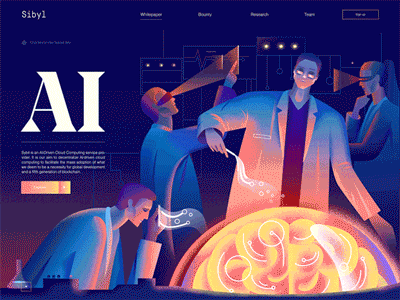
by Zark Steele-Eklund for Studio VOR
AI現在可以將手寫用戶界面設計從簡單的圖片轉換為可自我維護的有效HTML標記代碼。在這里,AI可以例行控制Web設計的總體內容,從視覺元素和版式到動畫和其他圖形信息。
AI can now transform handwritten user interface design right from something as simple as a picture to a valid HTML markup code that maintains itself. Here, the AI can routinely control the overall content of your web design, from visual elements and typography to animations and other graphical information.
當特定類型的網站需要設計決策時,這特別有用。例如,如果您的電子商務網站收到過多的報價請求(RFQ),則可以基于AI與客戶之間的日常交互,使用AI對其進行優化。由于大多數網站所有者需要新的設計來補充其產品發布或即將運營的活動,因此在后臺運行的AI是一種完美的解決方案,可以保持更新并保持市場競爭力。AI通過收集有關網站分析,其用戶群,產品目錄和其他關鍵方面的信息來運轉。數據完成后,AI將根據您的最終指示(例如主題,內容和顏色首選項)為您的網站創建一個完全獨特的設計。
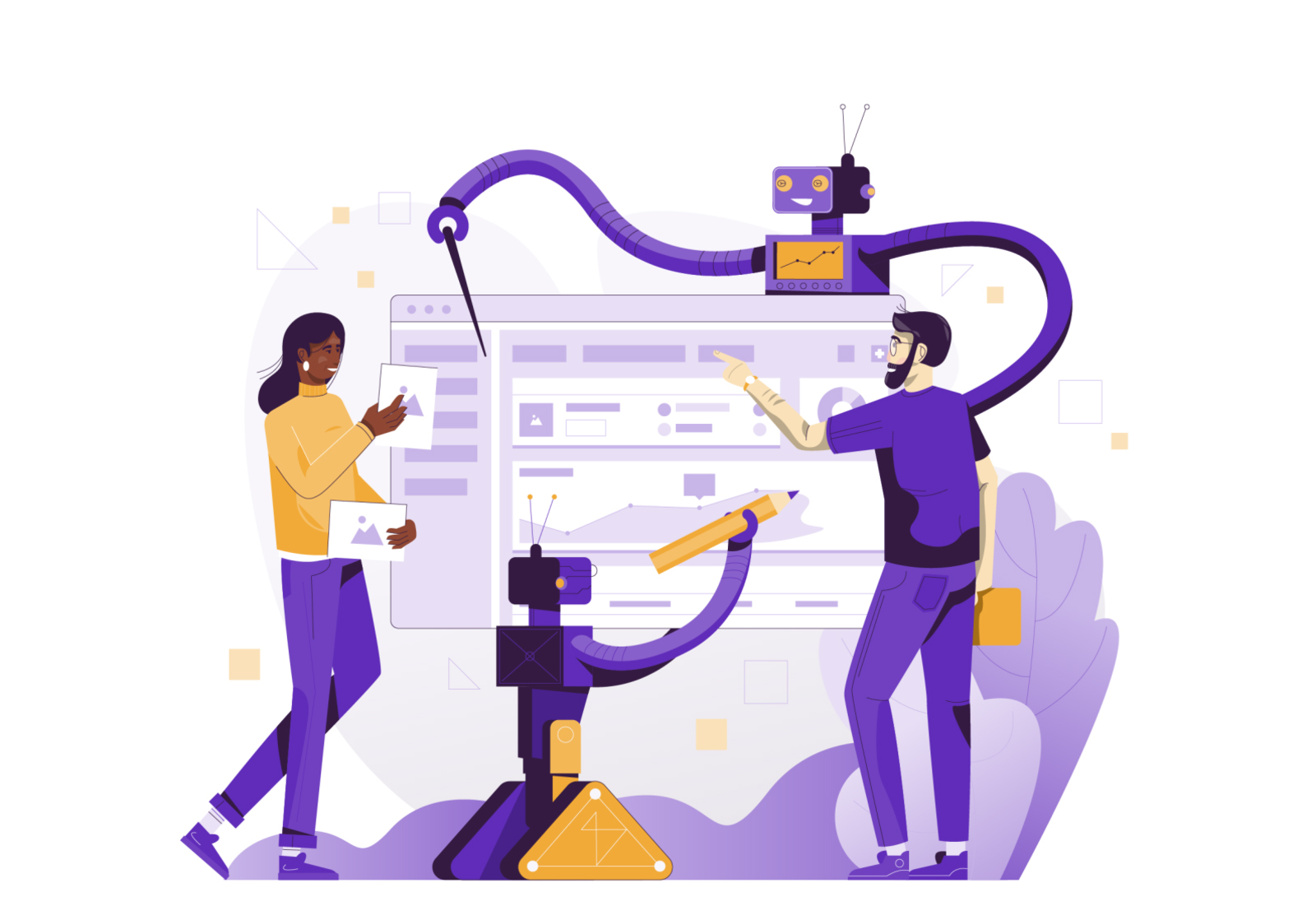
by Gytis Jonaitis for Flair Digital
This comes particularly useful when design decisions are required for specific types of websites. For example, if you have an e-commerce website that receives a plethora of Request for Quotes (RFQs), you can optimize it with AI-based on its everyday interactions with customers. Since most website owners require new designs to supplement their product launches or upcoming events, an AI working in the background works as a perfect solution to stay updated and remain competitive in the market. The AI operates by collecting information on the website analytics, its user base, product catalog, and other key aspects. Once the data is complete, the AI will take the final instructions from you such as theme, content, and color preferences to create an entirely unique design for your website.
根據最近的一項調查,有61%的業務專業人員聲稱機器學習和AI成為他們組織最重要的數據計劃,而且AI不僅是復制智能,其構建的重要組成部分是盡可能人性地執行功能。例如,由AI編程的自動駕駛汽車不僅要遵守交通規則,而且還要學會與其他駕駛員接觸時表現出人類智慧的跡象。類似地,與人類用戶交互的基于AI的聊天機器人不僅能夠產生答復,而且還以盡可能人為的方式答復它們,從而為每個查詢創建唯一的答復。
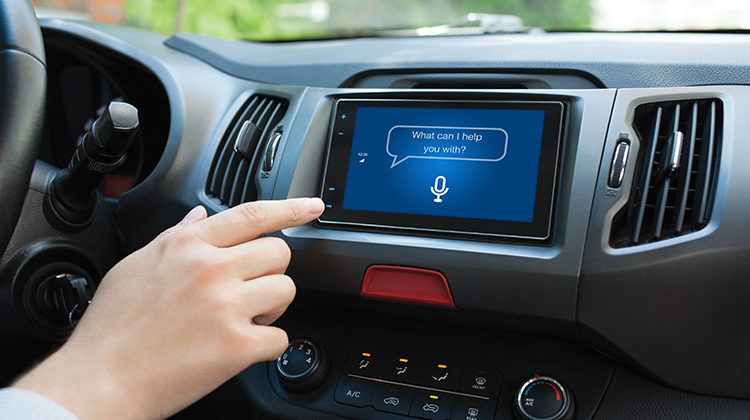

改善用戶體驗的AI
AI for Improving UX
人工智能現在控制著Web設計的幾個關鍵方面,并在UX中起著決定性作用。借助AI在Web設計方面的最新干預措施,設計師可以將其轉變為對客戶來說更有意義,更豐富的體驗。人工智能使設計師能夠創建更引人入勝,響應更快,最終更人性化的界面。
AI now commands several key aspects of web design and holds a deciding role in UX. With AI’s latest interventions in web design, designers are able to transform their online front into a more meaningful and rich experience for the customer. AI has enabled designers to create interfaces that are far more engaging, responsive, and ultimately more human. Among many of AI’s achievements we see today, its most evident role is in myriad AI tools.

by Brett Parker
人工智能有效地改變了現代網頁設計的面貌,并迅速建立了許多人機交互的標準。它最大的例子之一是聊天機器人的進入,現在幾乎所有網站或移動應用程序都在使用它。憑借先進的AI算法和復雜的機器學習程序,人工智能正在有效地彌合人類認知與機器自動化之間的鴻溝。
AI has effectively changed the face of modern web design and quickly established many standard parts of human-machine interaction. One of its biggest examples is the entry of chatbots that are now the fixture of almost every website or mobile application. With advanced AI algorithms and complex machine learning procedures, AI is effectively bridging the gap between human cognition and machine automation.
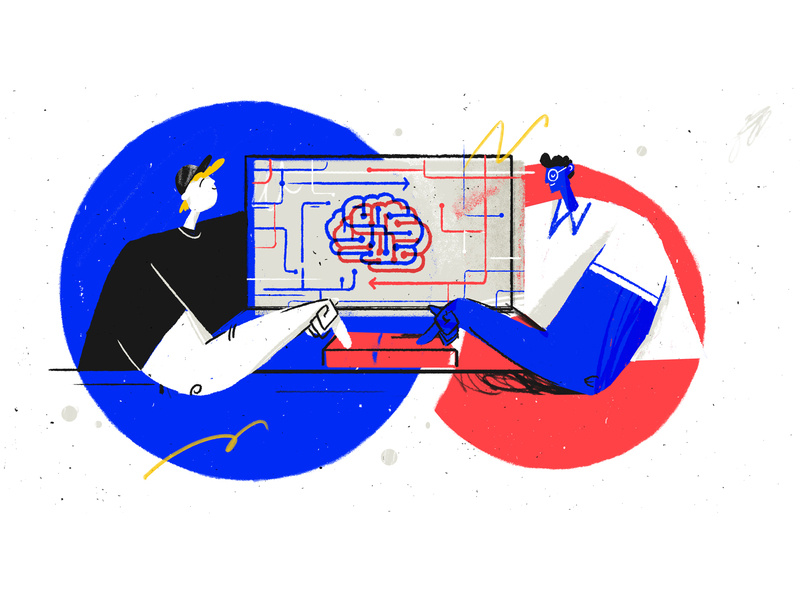
by Agnieszka for Tooploox
到2022年,基于AI人工智能的聊天機器人將幫助在線企業節省80億美元的商業成本。 這改變了傳統網頁設計的構成,并對用戶與網站的交互方式產生了巨大影響。而且,基于AI的應用程序重新定義了交流的含義,產生了類似于人的答案,從而取代了對預先編程的對話路徑的需求。當今的聊天機器人基于高級自然語言處理(NLP)系統,該系統能夠生成有意義的對話,從而在吸引人方面具有更好的效果。以下是一些有趣的統計數據,聊天機器人將如何領導未來的在線業務。
This has changed the fabric of traditional web design and rendered a powerful impact on the way users interact with websites. Moreover, AI-based applications have redefined what it means to communicate, producing human-like answers, replacing the need for pre-programmed conversational pathways. Today’s chatbots are based on advanced natural language processing (NLP) systems that able to generate meaningful conversations that have far better results in generating engagement. Here are some interesting statistics how chatbots will lead the online businesses in the future.
諸如Watson Assistant之類的高級AI聊天機器人可以了解企業的歷史記錄,并開發自己的知識庫。此外,它可以要求客戶提供更清晰的信息,要求客戶提供人工幫助,提供對話風格的建議以及獨立運行您的網站消息通道,移動應用程序和服務工具。
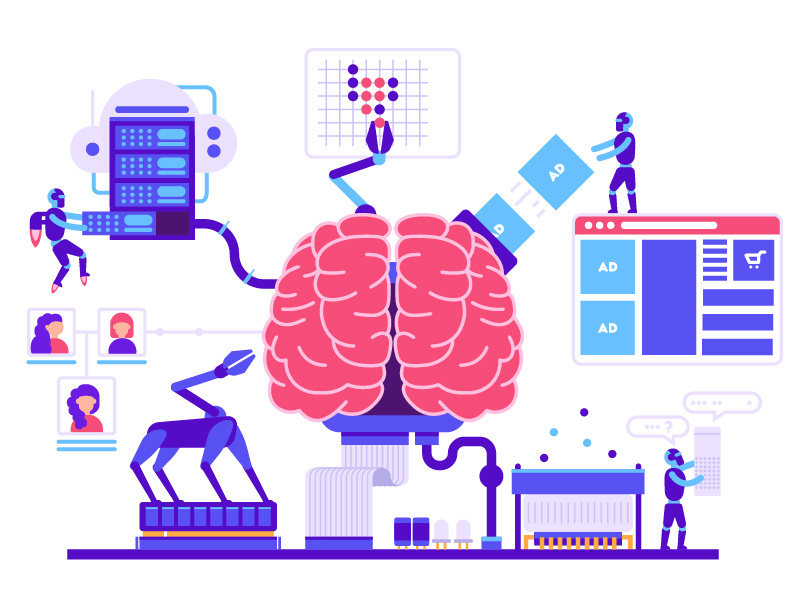
by Andrii Bezvershenko
· 受益于AI聊天機器人的頂級行業中,房地產記錄的使用率為28%,其次是旅行的16%和教育的14%
· 根據Gatner的報告,到2020年,將有85%的客戶互動將由AI聊天機器人處理
· 到2023年,通過聊天機器人將總共節省23億小時的業務和消費者
· 根據Global Market Insights的報告,到2024年,聊天機器人的整體市場規模將達到13億美元

增強UI的AI
AI for Enhancing UI

SOOGIF
同樣,用戶界面(UI)通過深度學習和自適應AI進行了優化,它們能夠完全自行決定設計。它通過培訓程序以了解設計原理并允許其觀察網站的現有頁面來工作。通過將這兩個過程結合起來,AI能夠模仿獨立的思想,并生成功能豐富且引人入勝的網頁設計,而這不包括人類的專業知識。Wix等Web開發平臺積極使用ADI來管理其UI的設計。
Similarly, User Interfaces (UIs) are optimized through deep learning and adaptive AI, that are capable of taking design decisions entirely on their own. It works by training the program to understand design principles, and allowing it to observe existing pages of your website. Combining the two processes, the AI is able to mimic independent thoughts and produce functional and attractive web designs exclusive of human expertise. Web development platforms such as Wix actively use ADI to manage the design of its UI.
Wix ADI算法的工作原理是從數十億種組合中進行選擇,以設計和構建完全為用戶專有的獨特設計界面。并且由于ADI已針對該平臺進行培訓,因此它會根據用戶需求,真實業務,客戶互動和個人喜好不斷學習和自定義網站。這使Wix能夠獲得有關其設計程序的預測報告,更快地實現價值,將成本降到最低,并實現更大的商人與客戶關系。LinkedIn還進行了廣泛的改進,以改善其網絡和導航功能,從而為用戶提供更好的瀏覽體驗。現在,它使用AI生成工作建議,連接建議以及如何優化配置文件。
Wix ADI algorithm works by selecting from billions of combinations to design and build a unique design interface, completely exclusive to the user. And since the ADI is trained for the platform, it keeps learning and customizing the site based on user needs, business activity, customer interactions, and personal preferences. This has allowed Wix to gain predictive reporting about its design program, get faster time to value, minimize costs, and achieve much greater merchant-customer relationship. LinkedIn also went through an extensive revamp to improve its networking and navigation features to provide users with a better browsing experience. It now uses AI to produce job recommendations, connection suggestions, and how profiles should be optimized.
AI推薦和優化工具有許多基于AI的產品推薦解決方案,它們使用社交證據來影響購買決策。這些工具會在客戶與網站互動后立即提供建議,并根據他們的搜索提供有價值的見解。 擴展程序和插件可以跟蹤客戶商店的歷史記錄,并根據相關搜索生成建議。領先的在線媒體服務提供商Netflix還使用AI通過根據用戶的喜好和類似概況的客戶所做的選擇顯示結果來管理其建議。Netflix的流媒體播放中有80%是AI建議的結果。

SOOGIF
Adobe等公司已經開始將AI納入其產品架構。Adobe在2016年推出了Sensei,這是一個基于AI的框架,旨在使用智能功能來提高平臺的設計能力,以幫助設計師更有效地完成任務。Sensei還使用機器學習來增強項目的整體設計和交付,從而顯著改善最終產品。通過使用AI和機器學習,Adobe Sensei可以幫助您發現設計中隱藏的機會,增強繁瑣的流程,并為每個用戶提供相關的體驗。

AI作為Web設計診斷工具
AI Recommendation and Optimization Tools
盡管通常部署AI來改善Web設計的功能和用戶體驗,但它也可以用作精密診斷工具。隨著現代網頁設計的新時代,快速變化的趨勢以及更嚴格的搜索引擎(例如Google)標準,您的網頁設計質量已成為最終決定數字成功的關鍵因素。但是,盡管您可以實現高質量的設計,但還必須確保通過定期運行測試來保持設計的維護性。但是,由于這些測試的不斷重復,導致對源代碼進行了修改,從而進一步增加了處理過程的負擔。這些測試不僅耗時,而且經常對您的網站性能造成重大損失。

by Alina Guzik
基于AI的分析工具可讓您評估設計的質量,實時觀察其性能,并獲得有關如何改進它們的真實見解。借助基于AI的診斷工具,您現在可以有效地消除對A / B測試的需求,并獲得更好的網站設計結果。由于設計軟件變得越來越復雜,最終產品通常會面臨很多挑戰。在這里,AI工具和應用程序可用于開發和測試不同類型的信息,驗證其真實性以及檢查其潛力范圍,而無需任何人工輸入。如果您對AI進行了正確的培訓,它可以消除診斷或編輯設計時原本必須涉及的大量程序。基于AI的測試器,例如Applitools可用于測試網站的可視代碼,跟蹤網頁行為并增強網頁的美觀性。

借助當前的統計數據和最新的技術突破,可以肯定AI在Web設計和開發中的重要作用。不斷增長的自動化需求,先進的計算資源以及越來越多的AI專業知識,使我們可以實現的AI數量呈指數級增長。盡管技術可能仍處于起步階段,但AI具有無窮的潛力來理解創意規則,并在眾多設計動態中獨立使用它們,將很快使傳統的Web設計方法黯然失色。將來,AI將可提供使用自適應智能來提供個性化用戶體驗的網站,而不是一種千篇一律的方法,保持持續關注。
The post 人工智能與網頁設計的未來 first appeared on Koma-品牌數字化體驗設計機構.
]]>